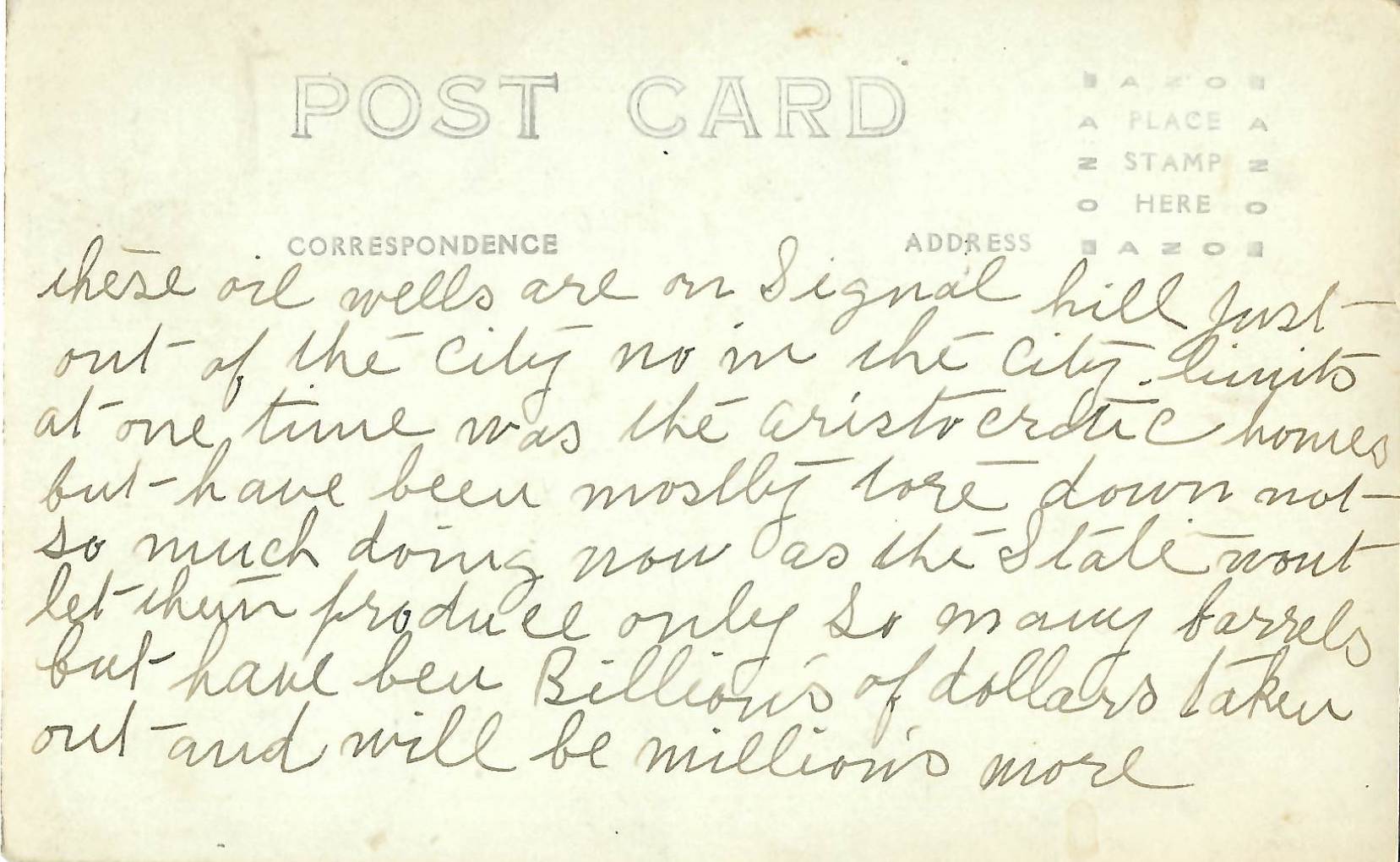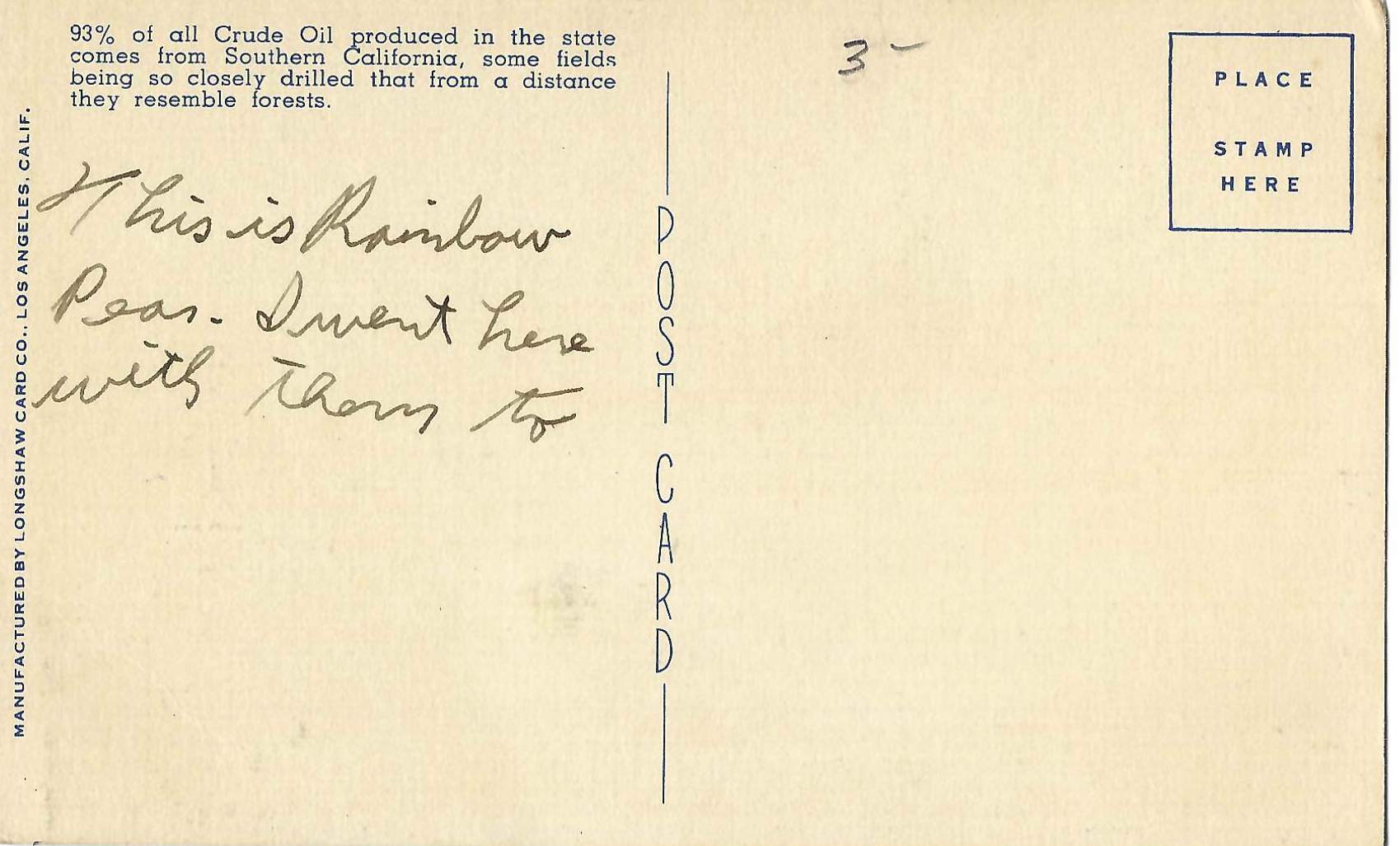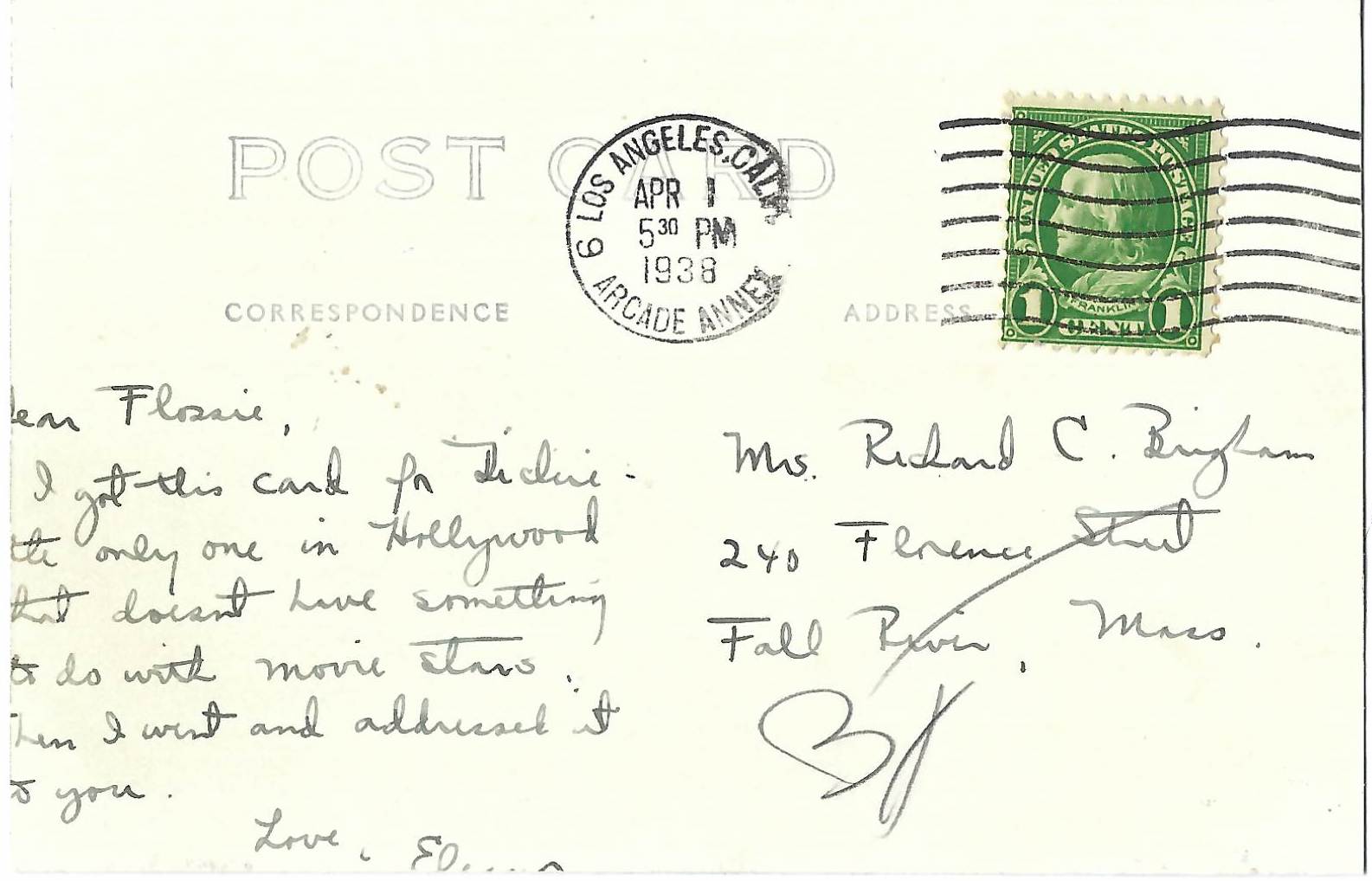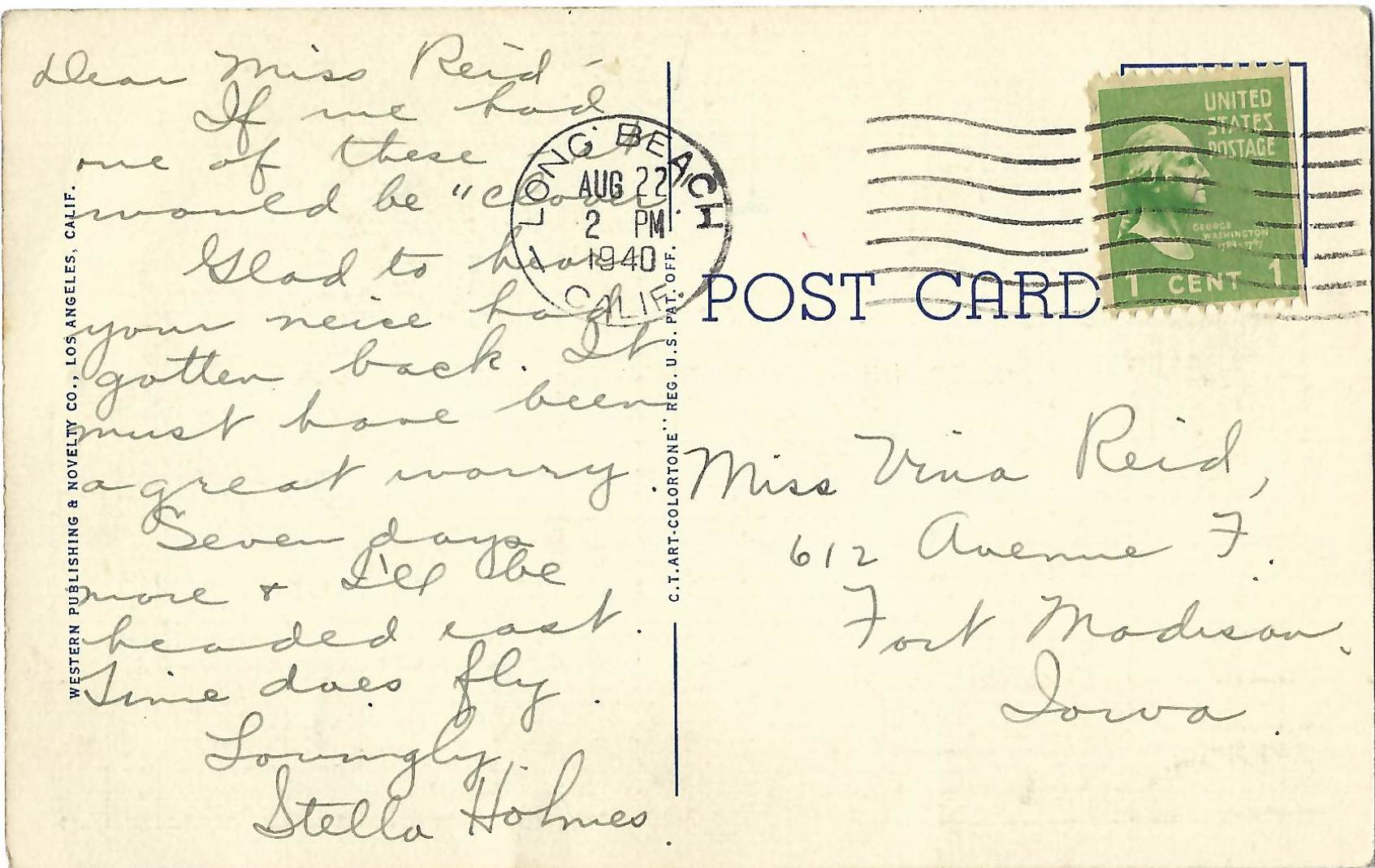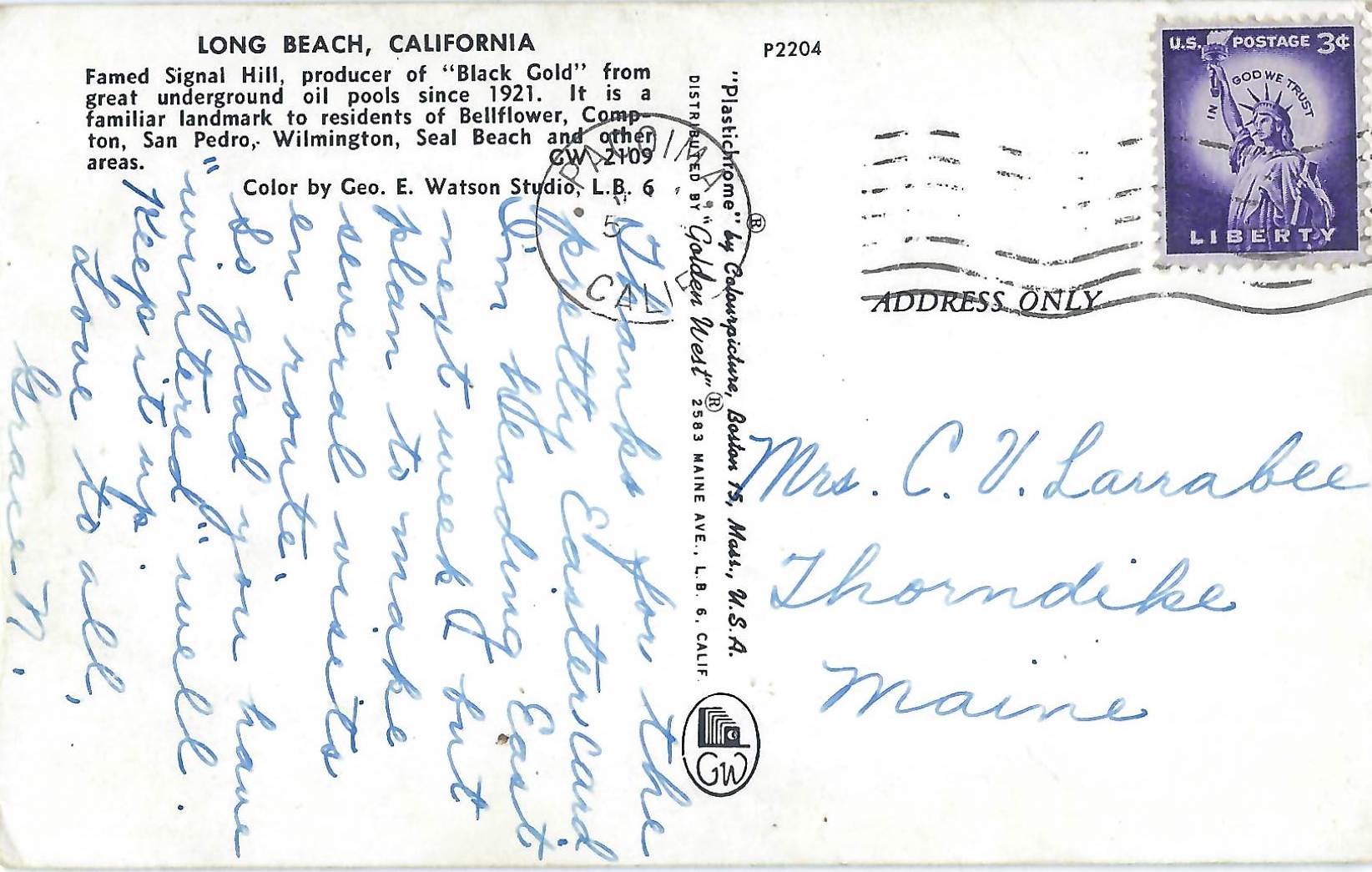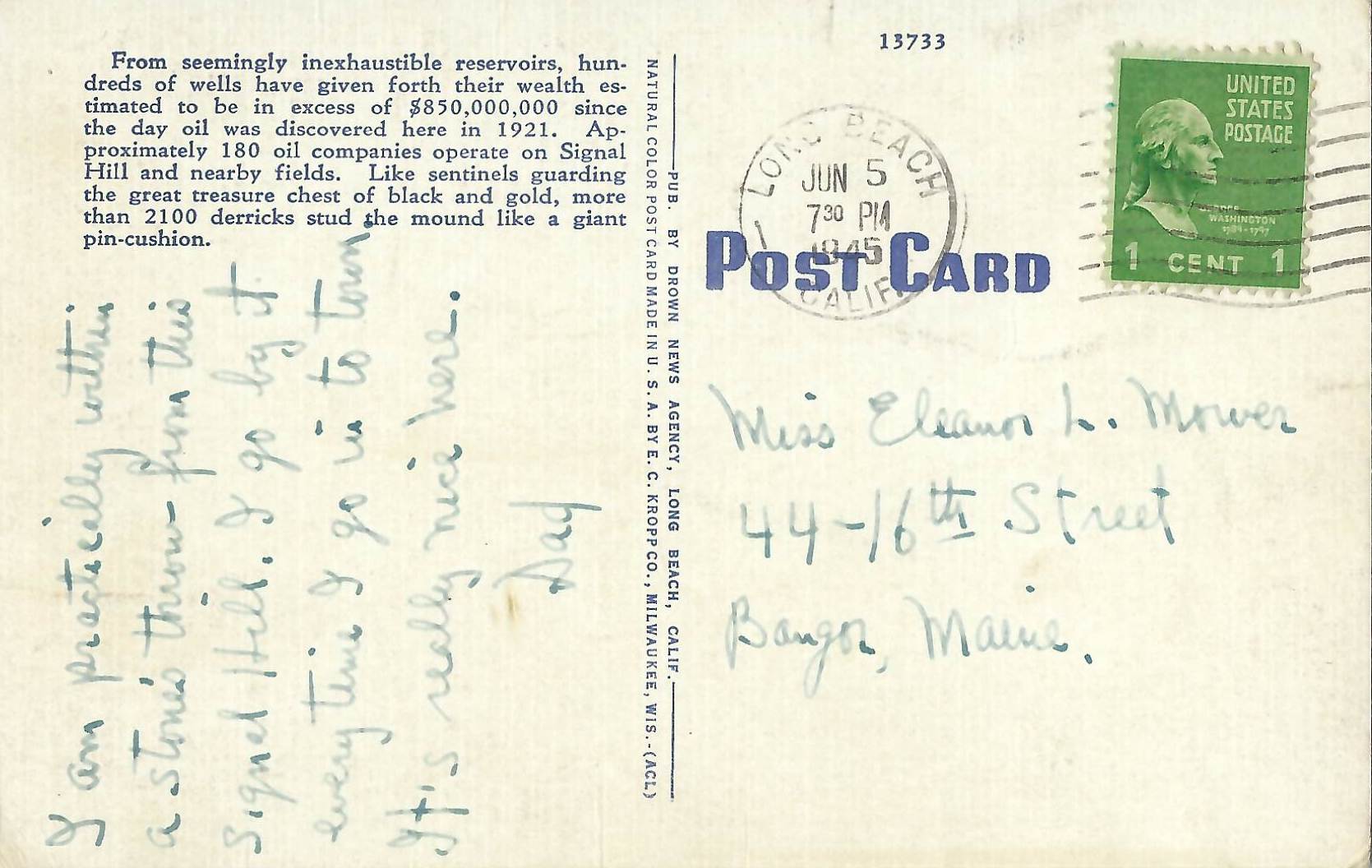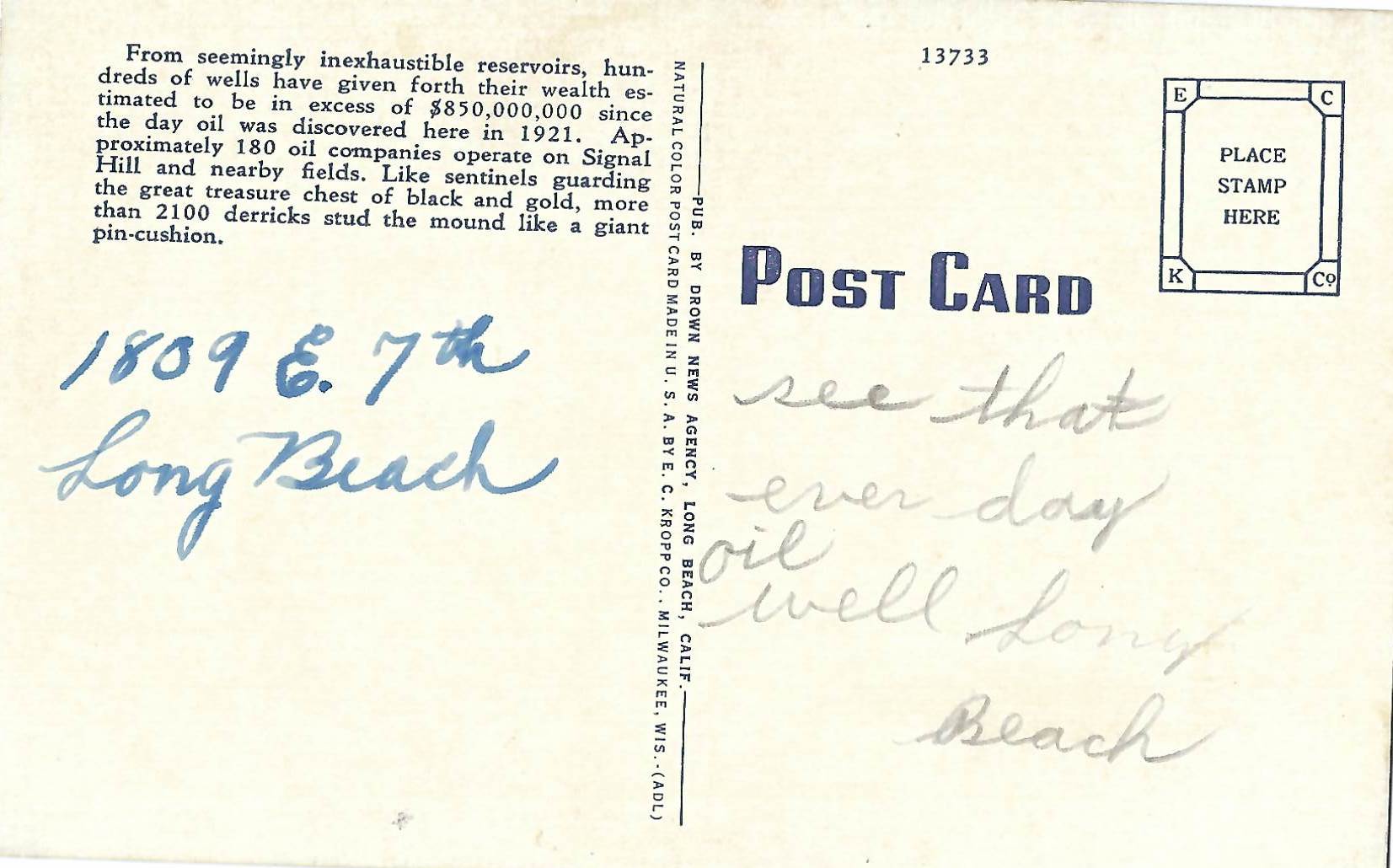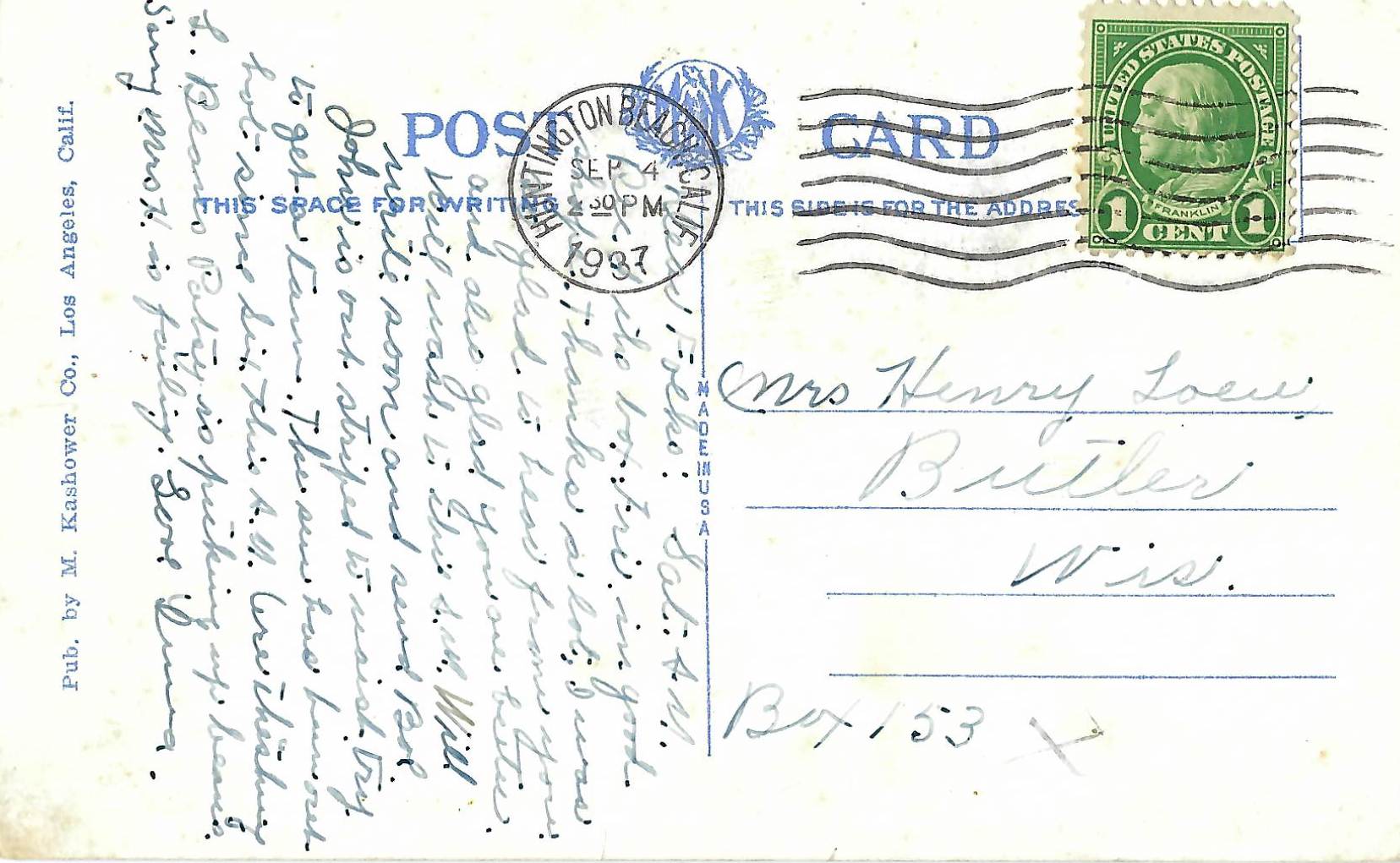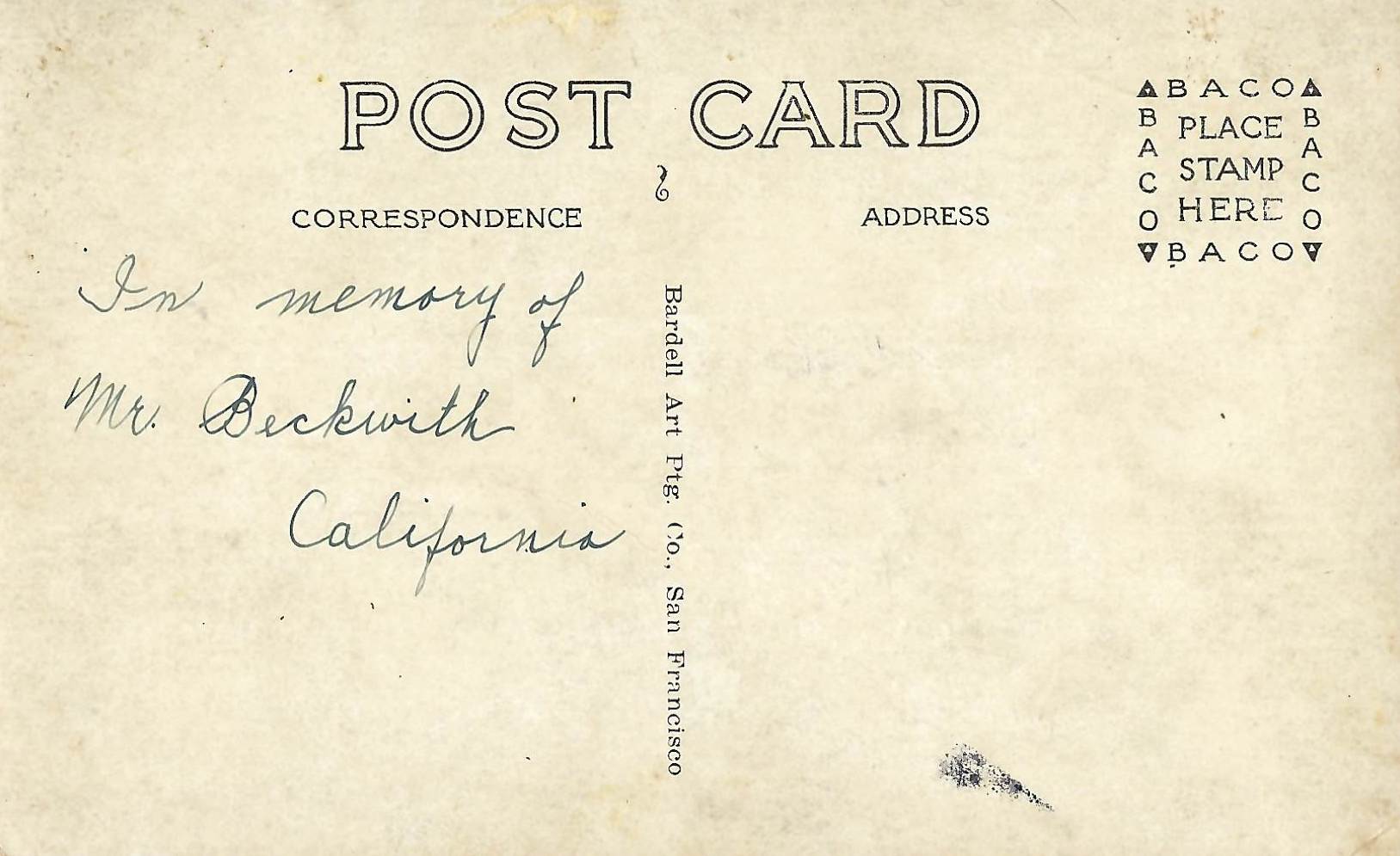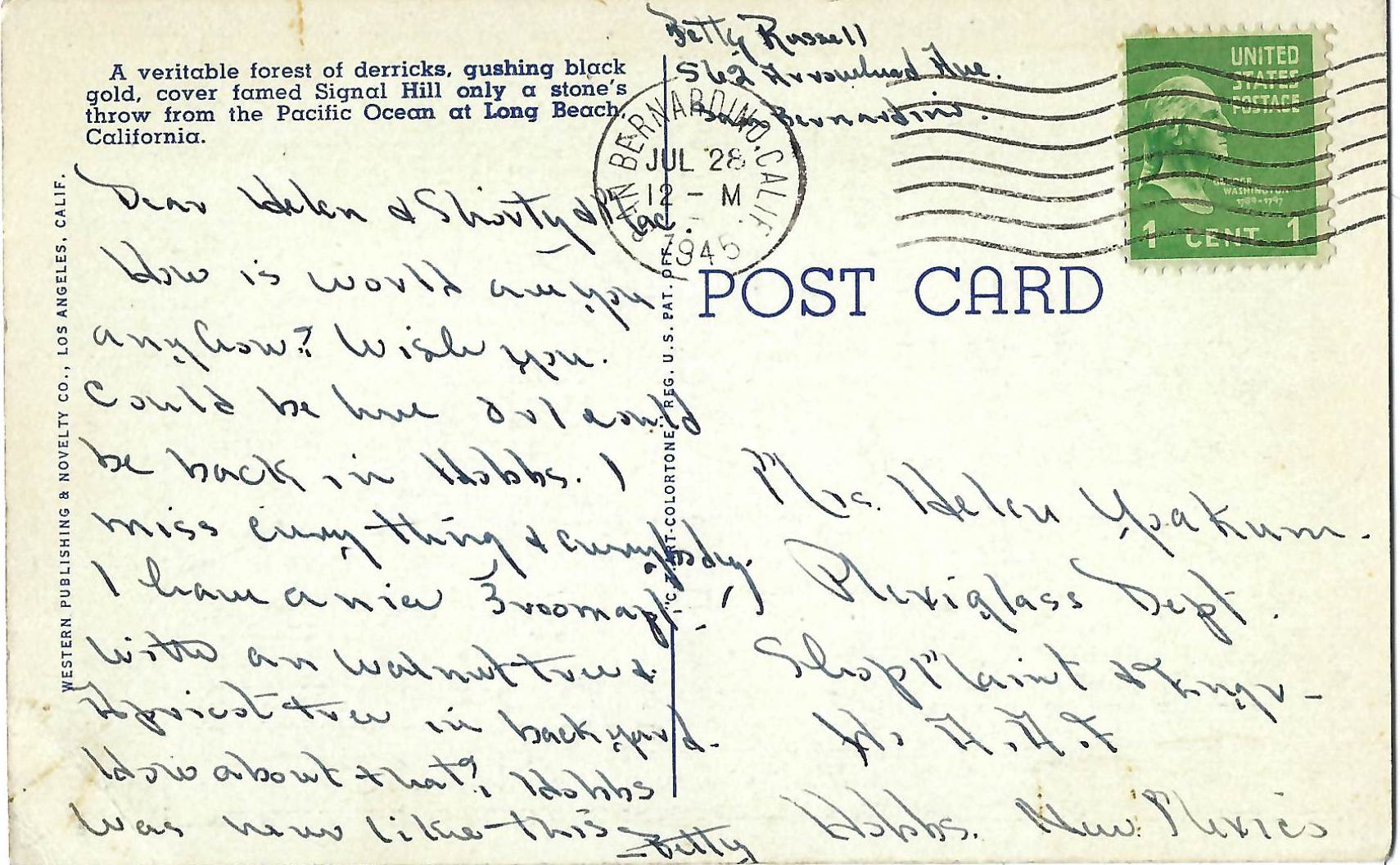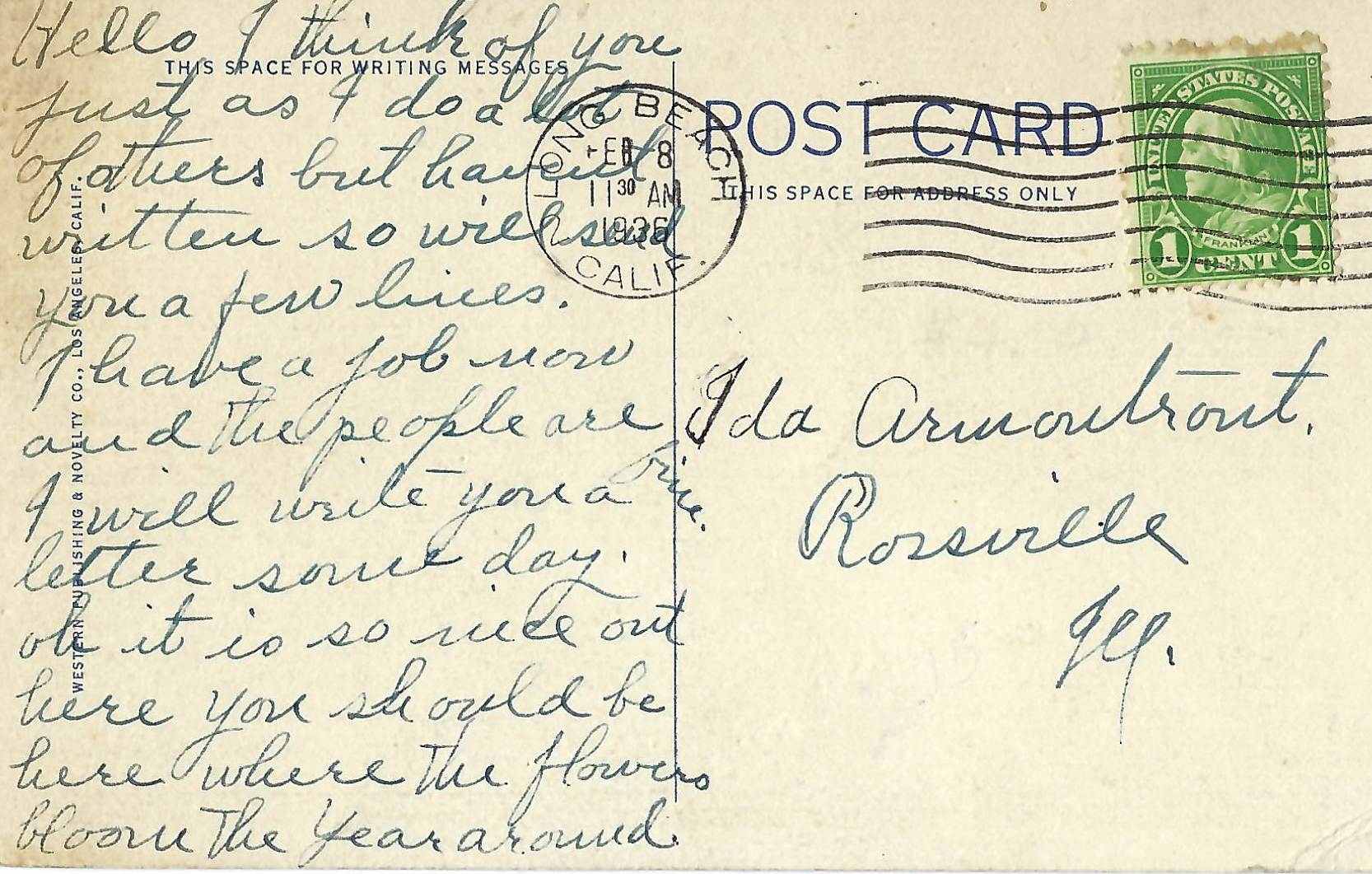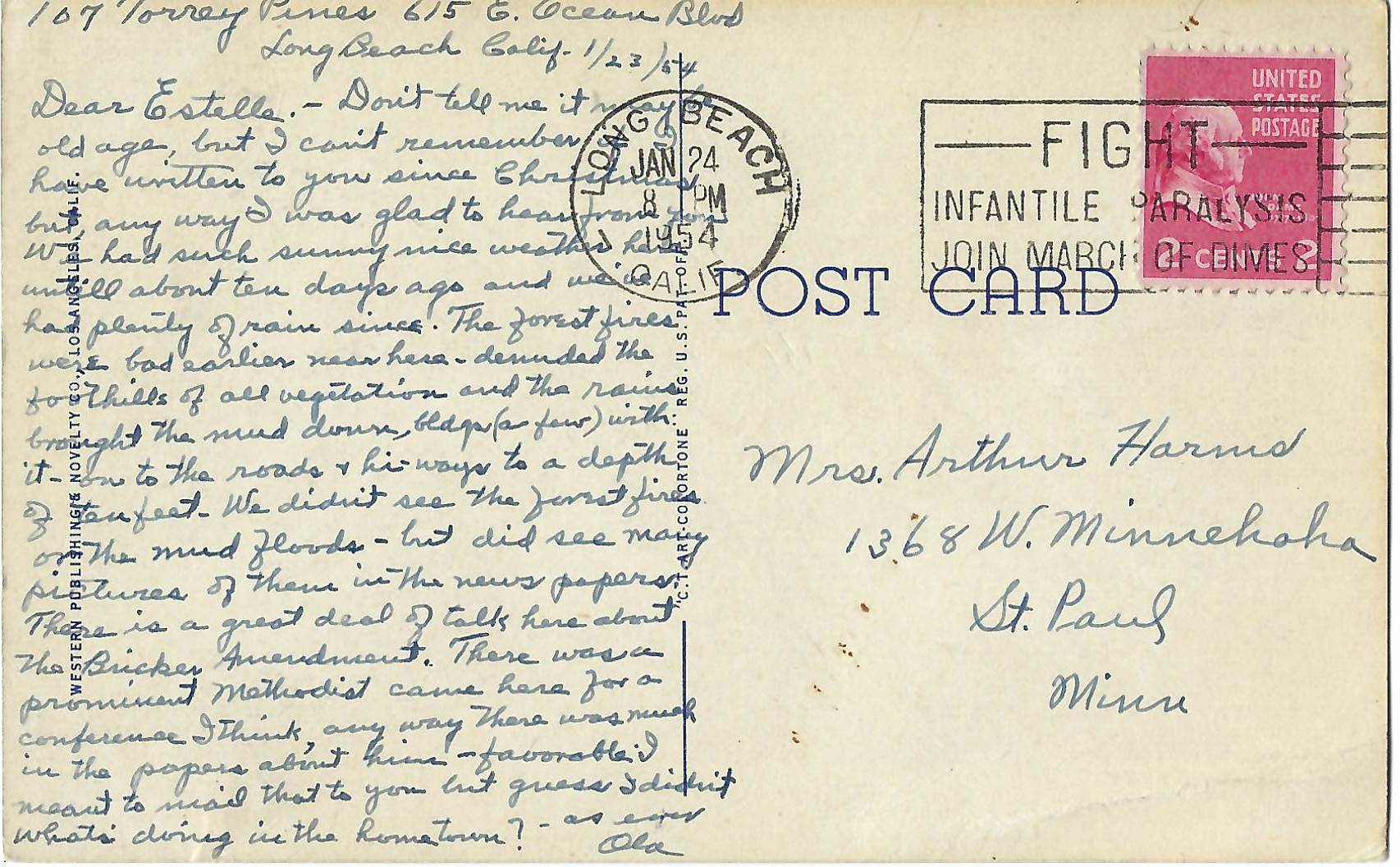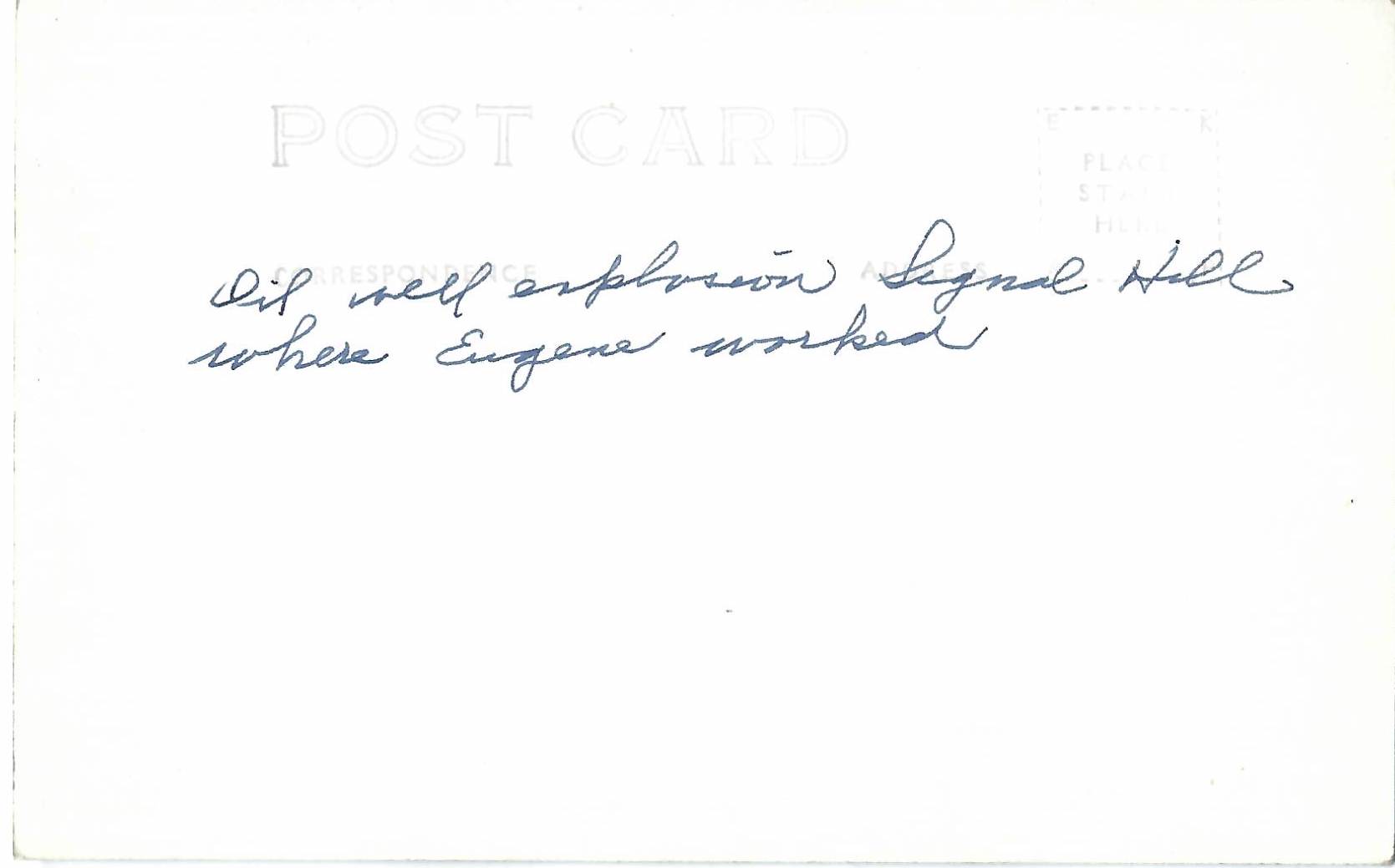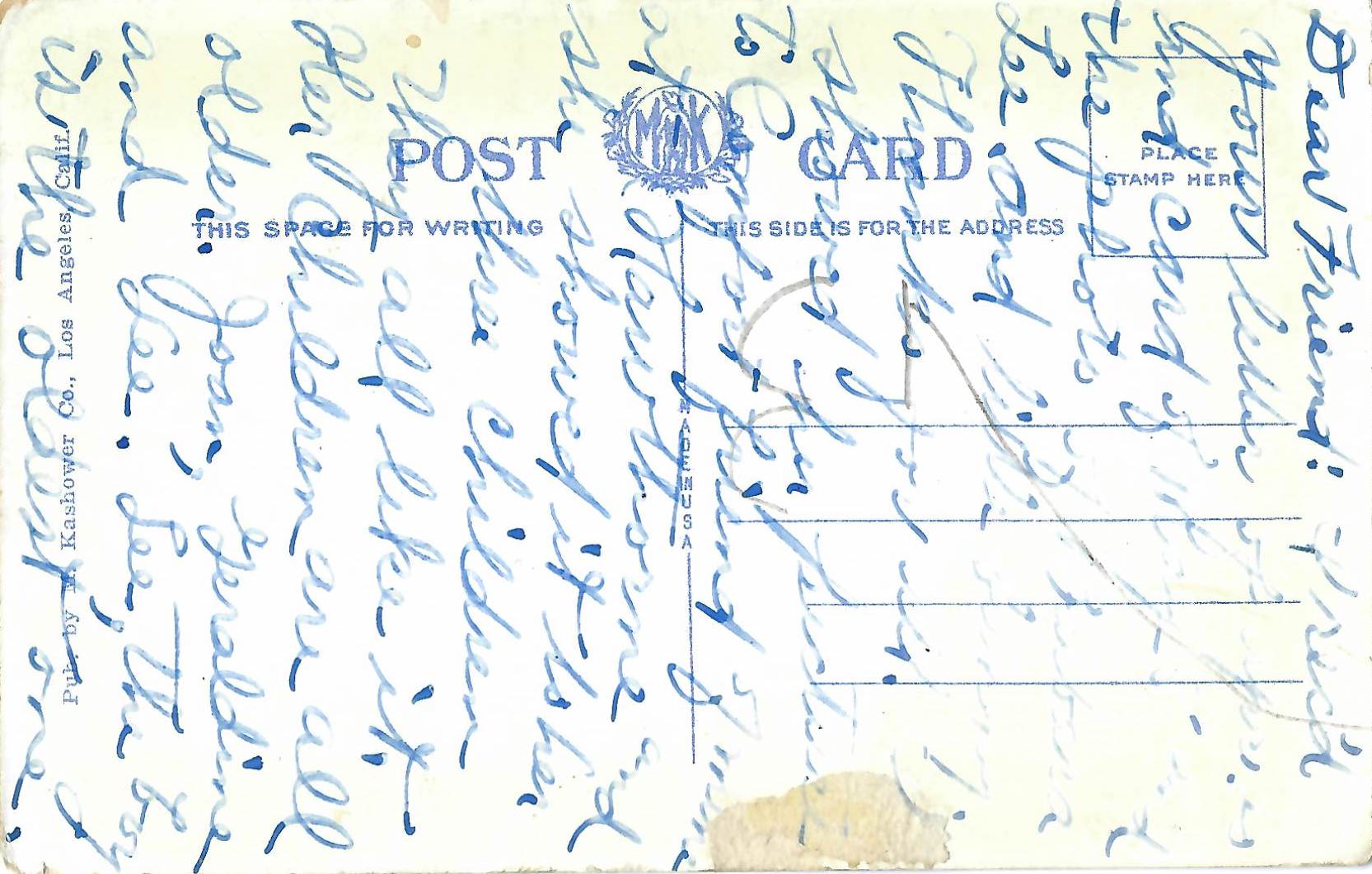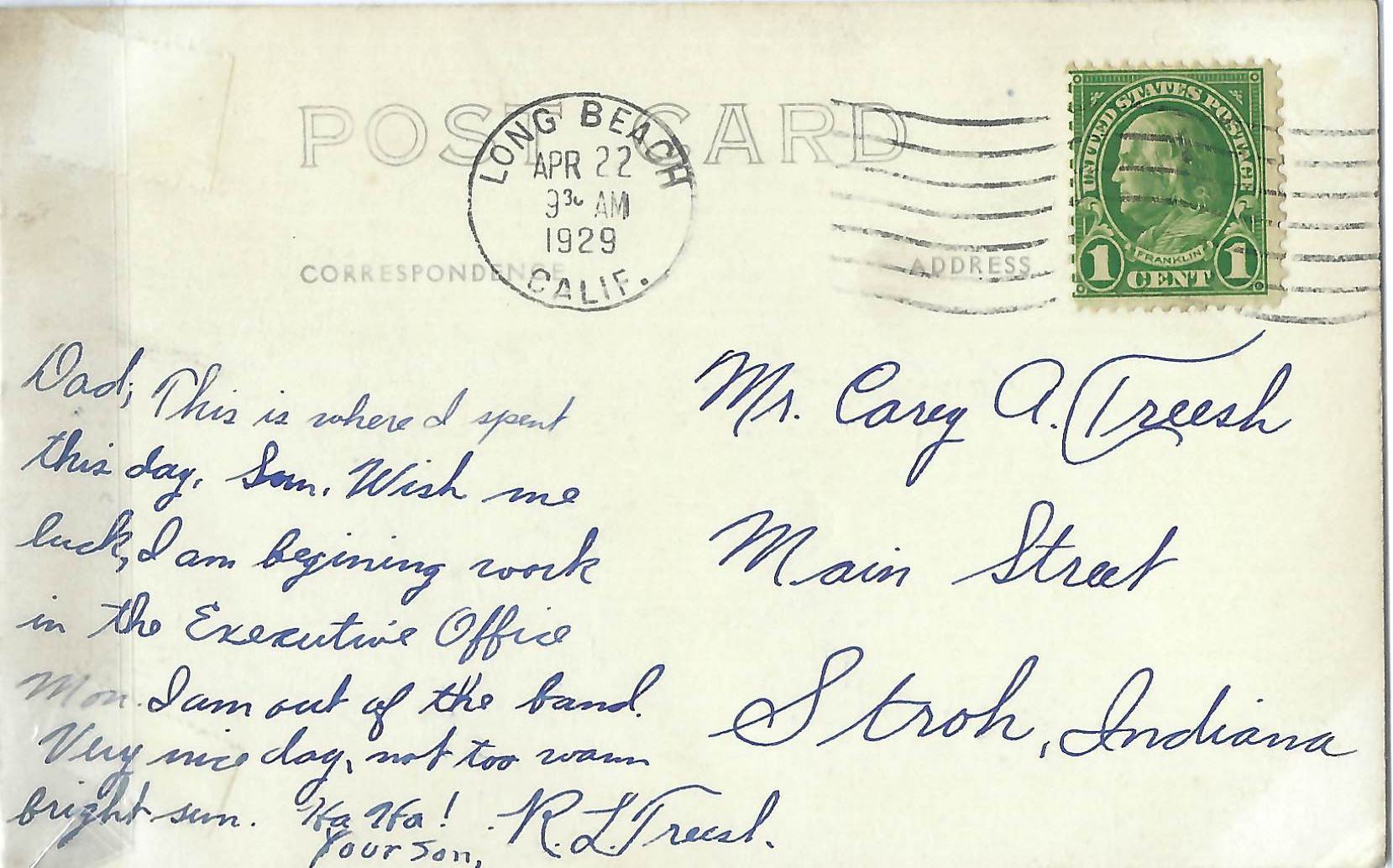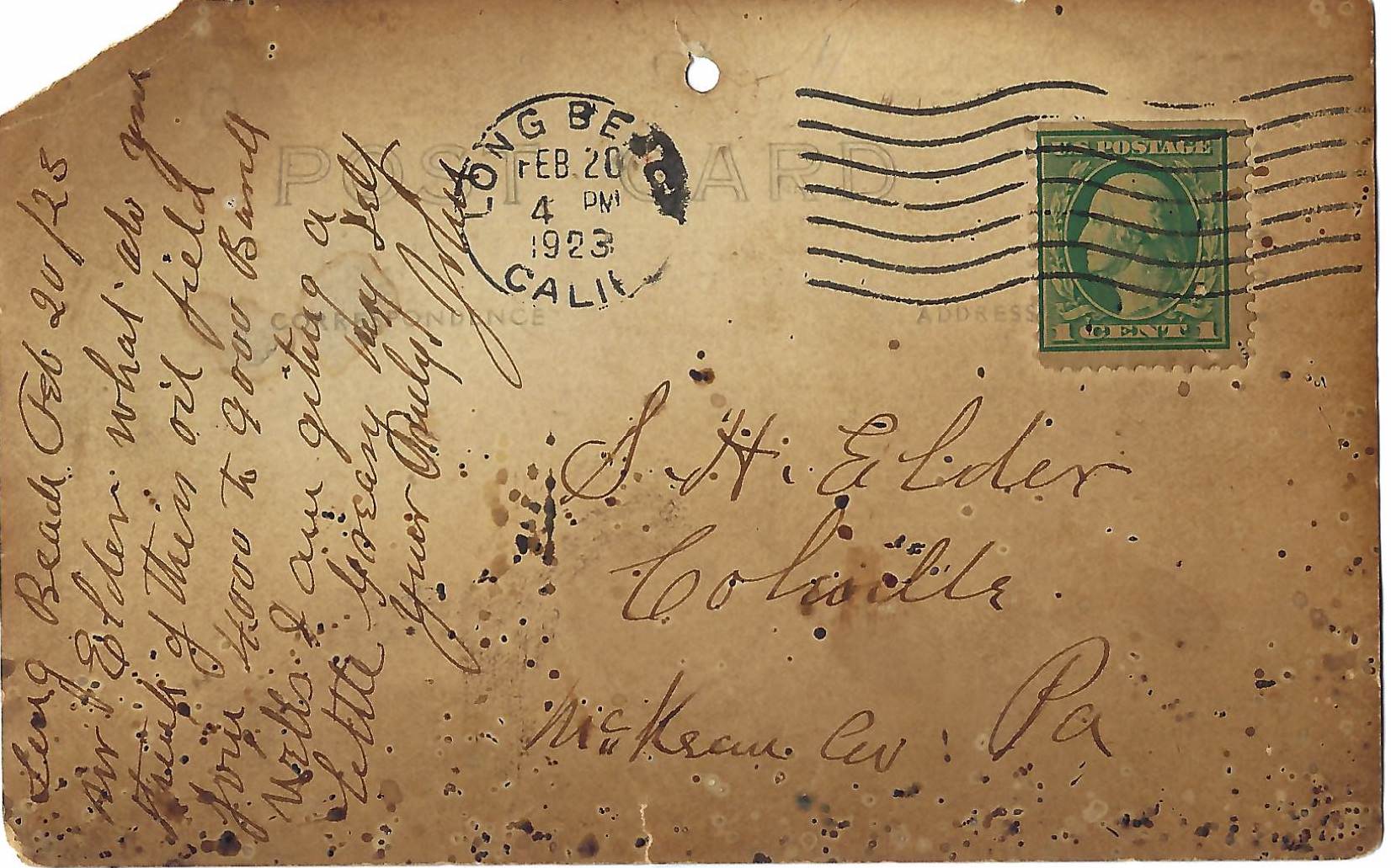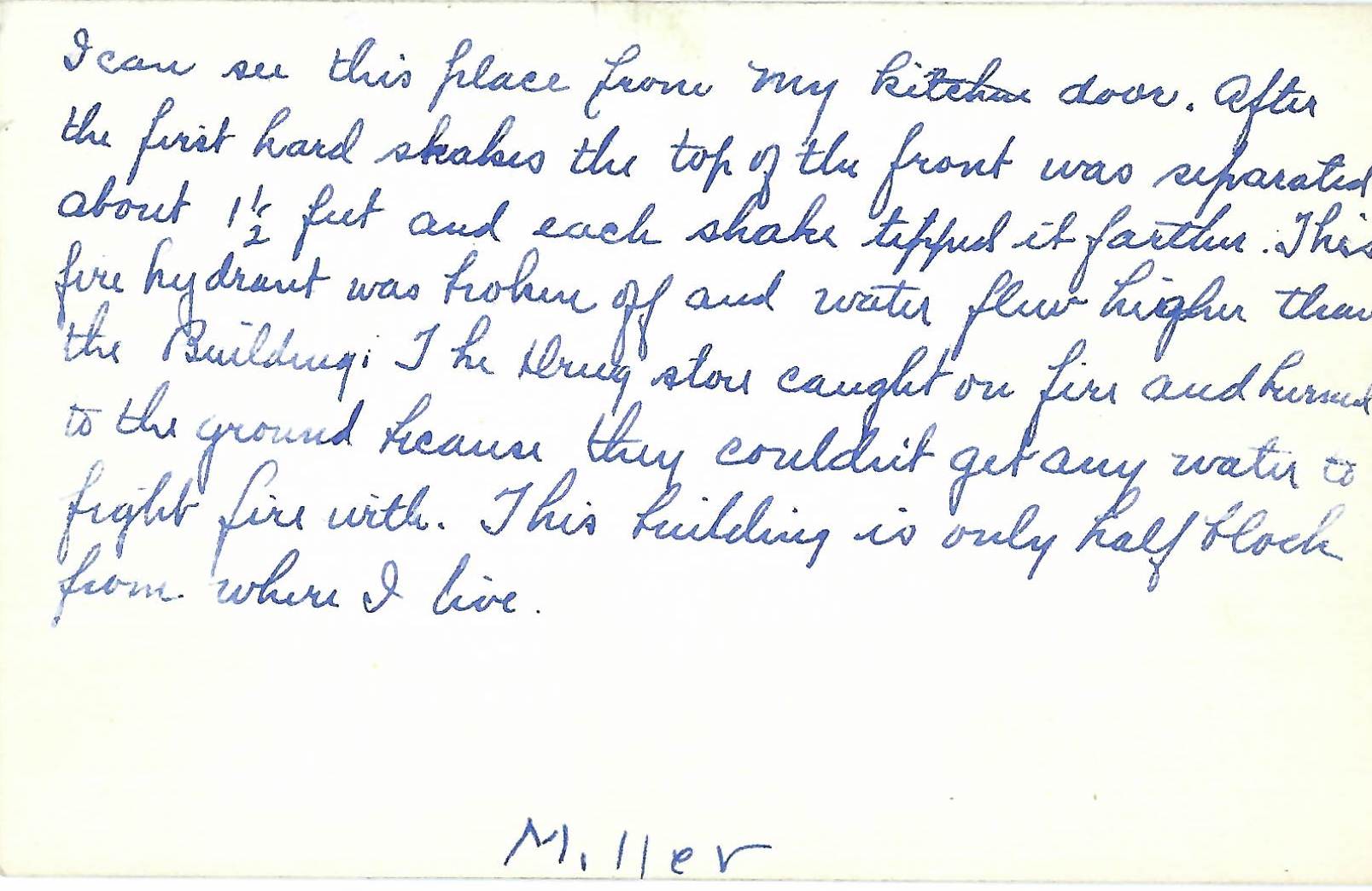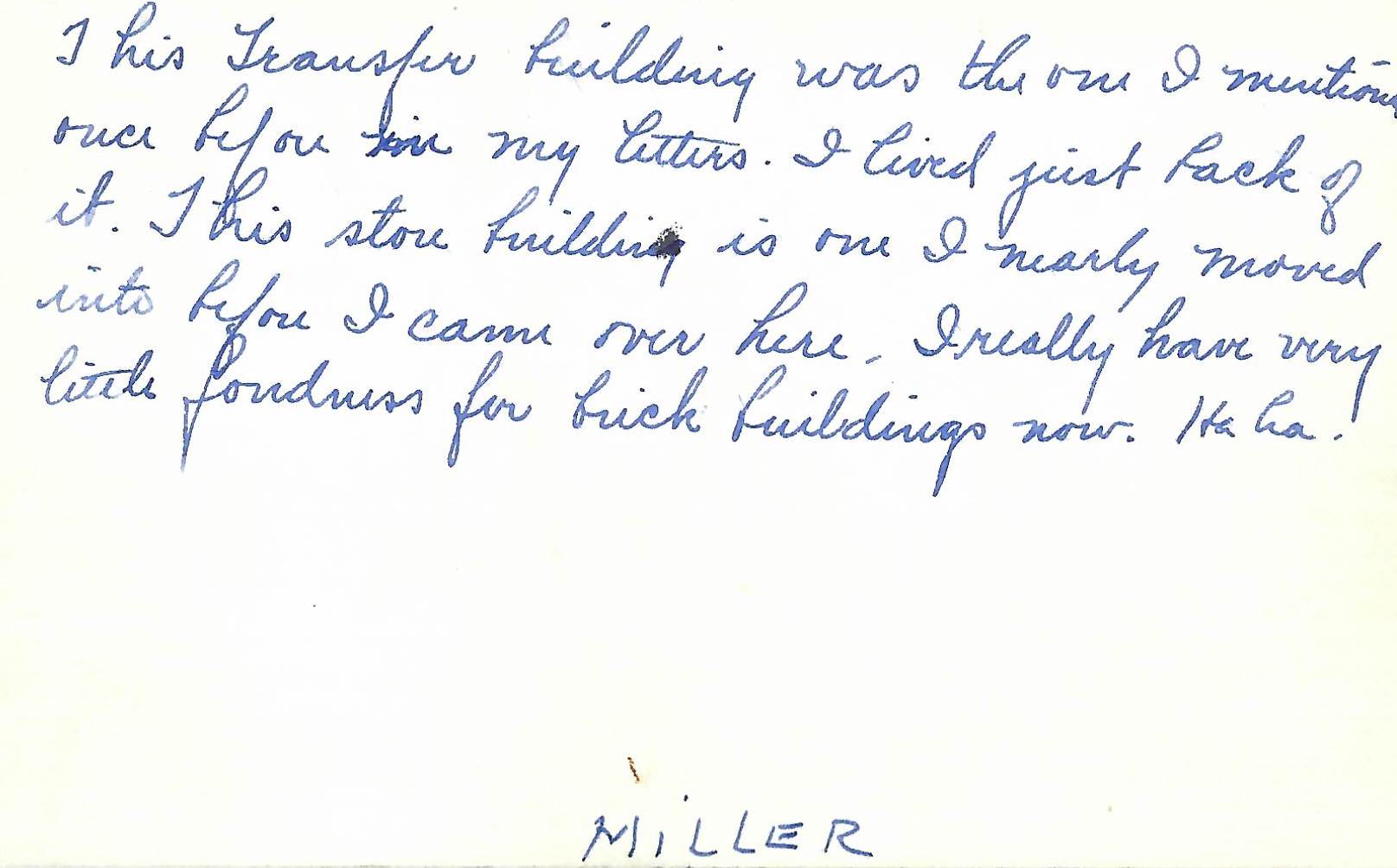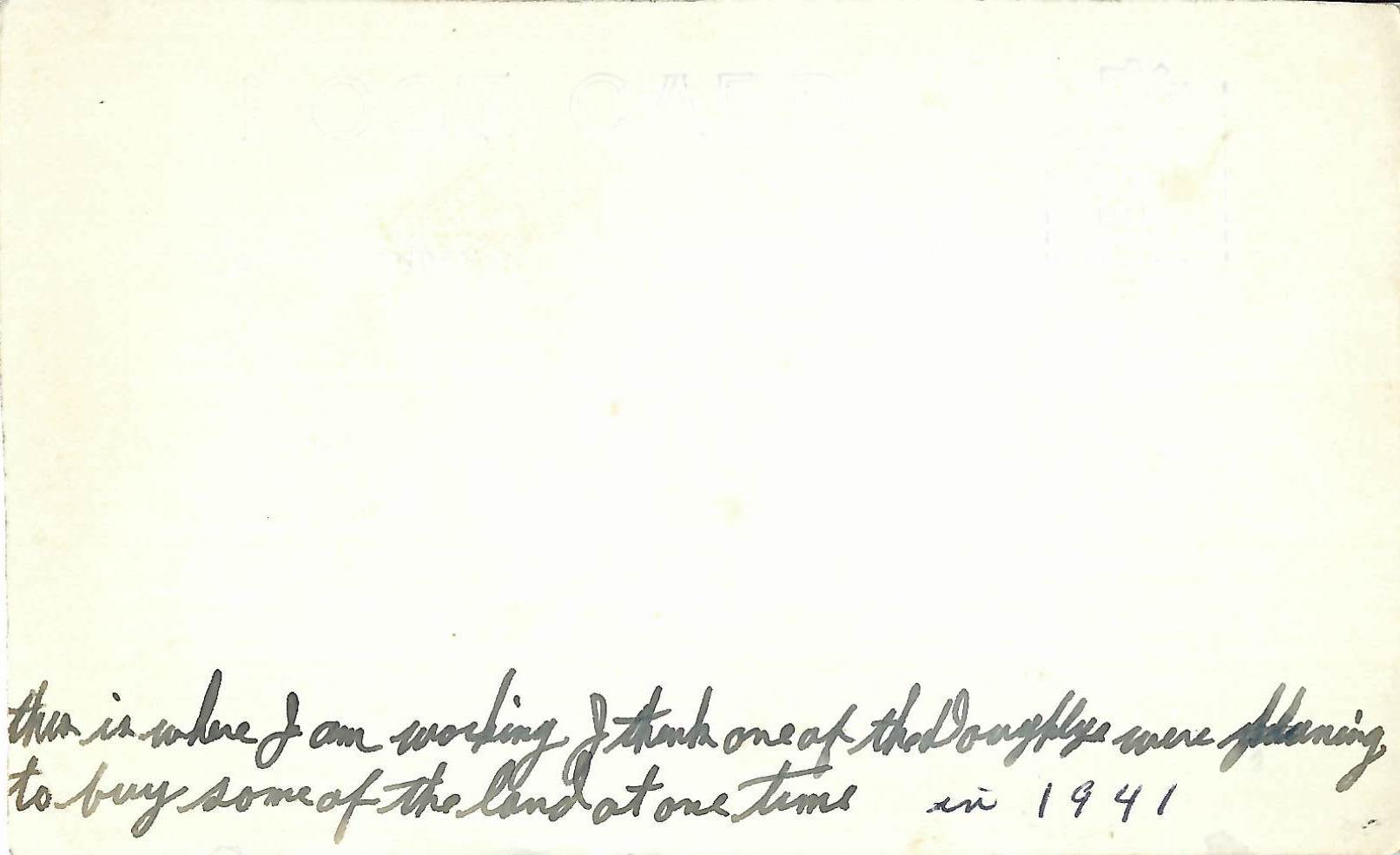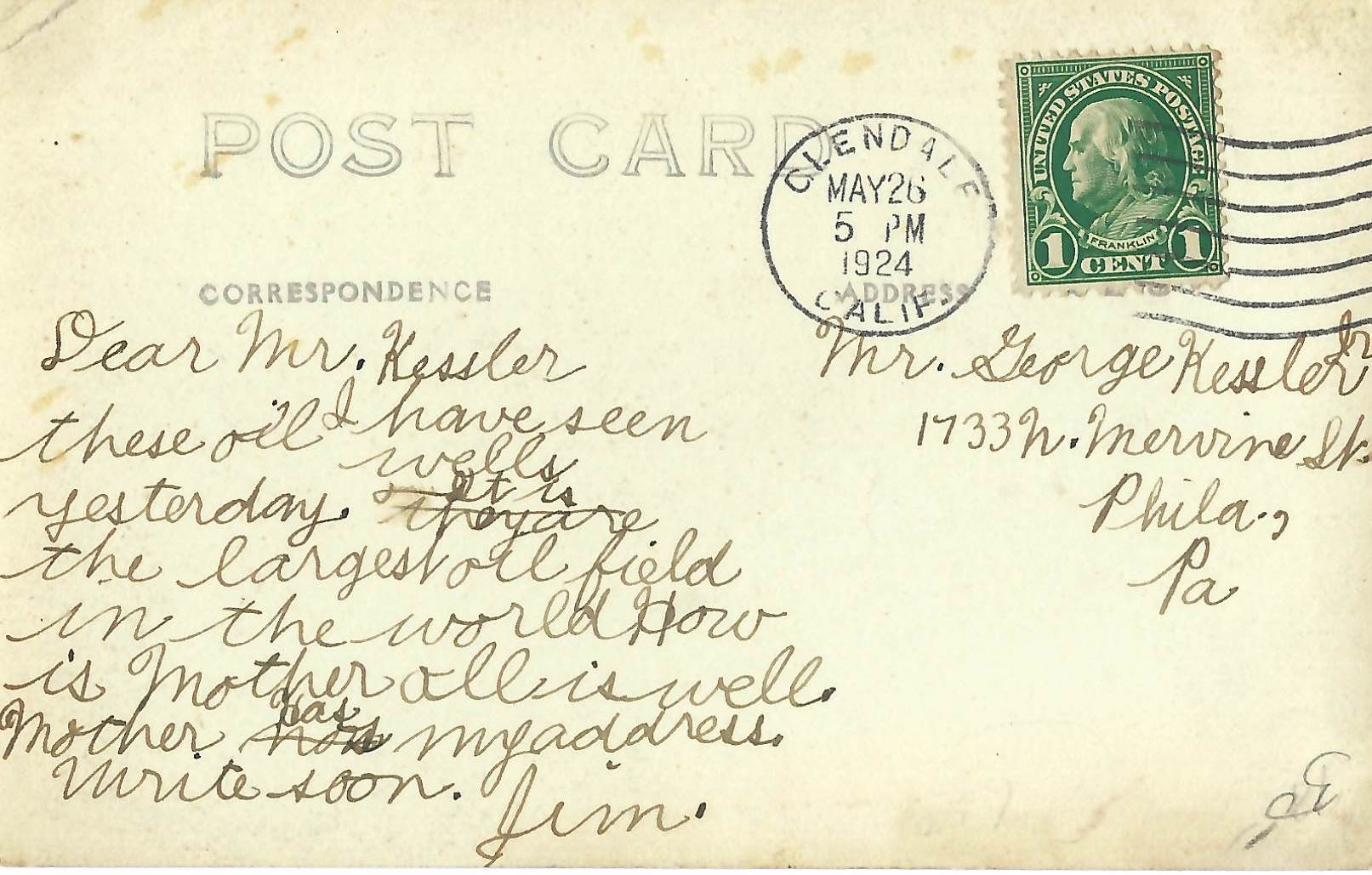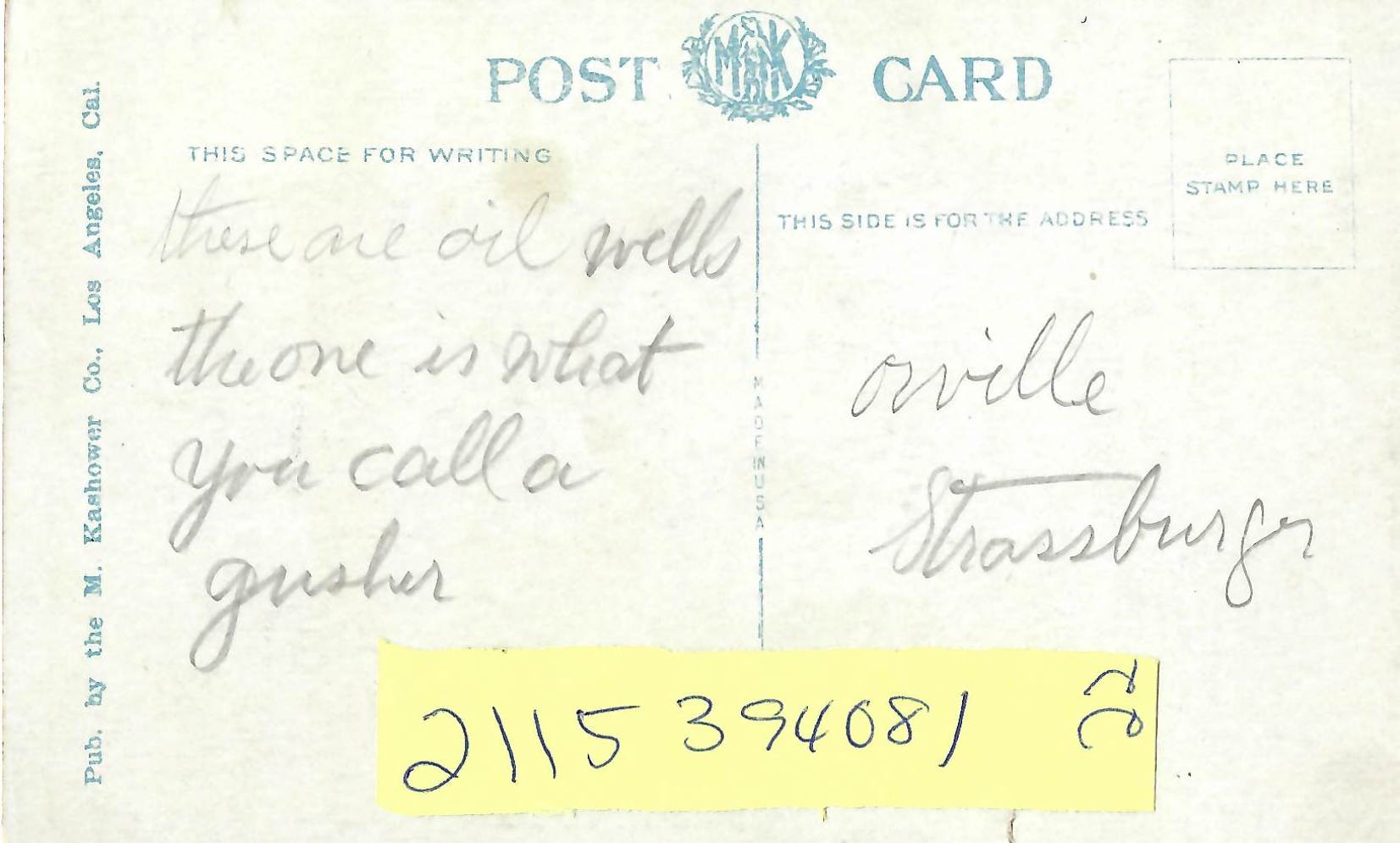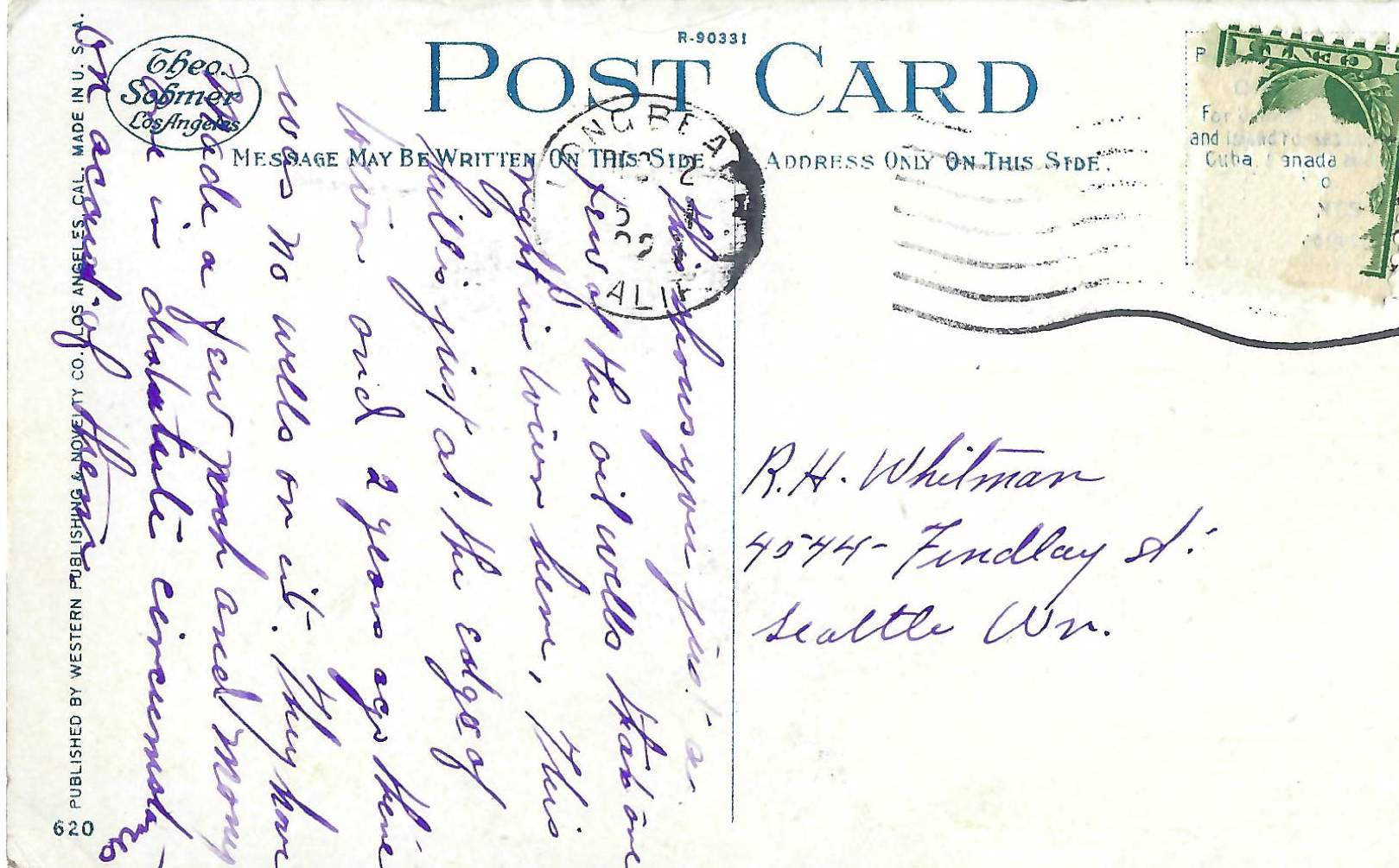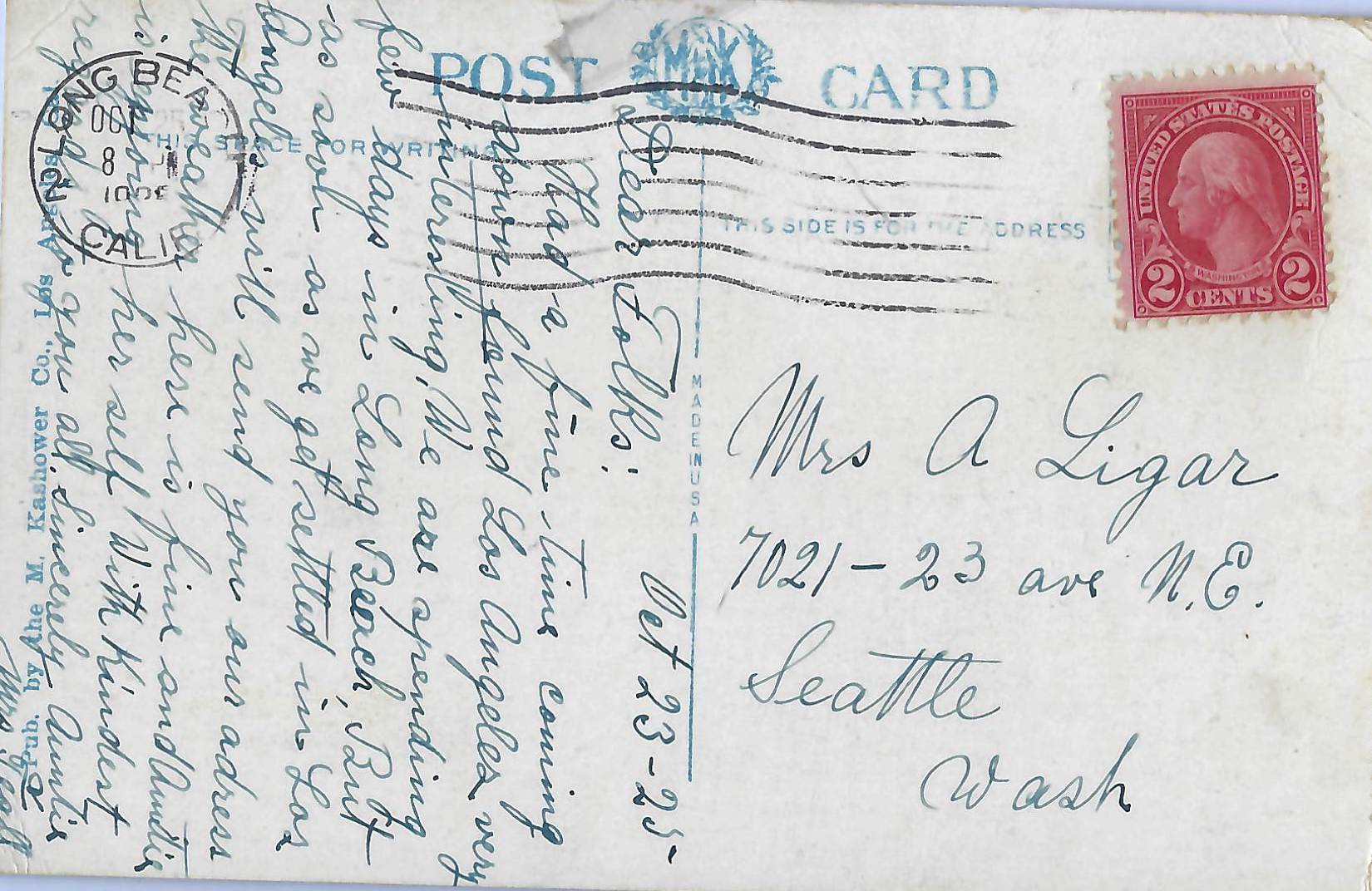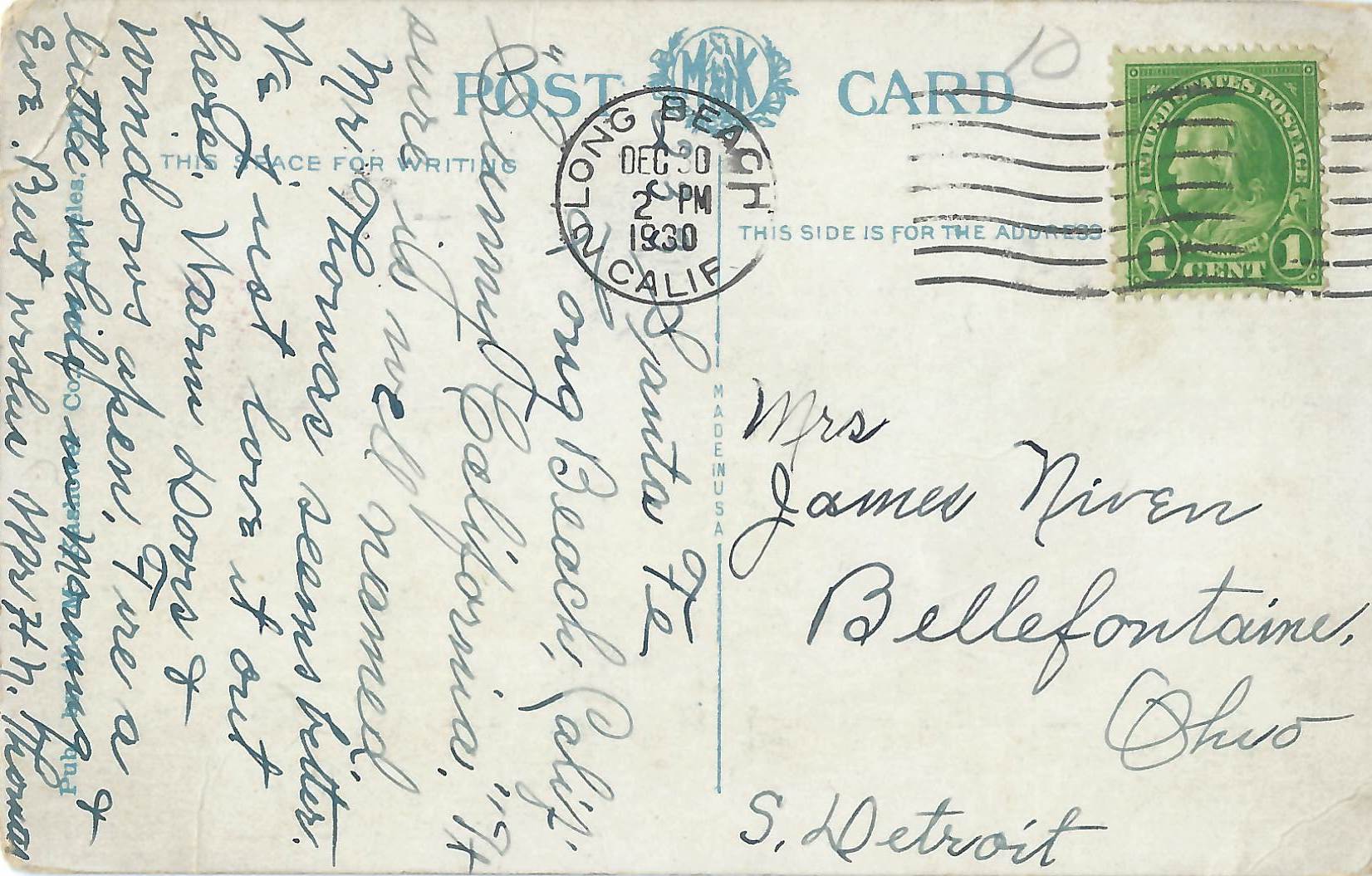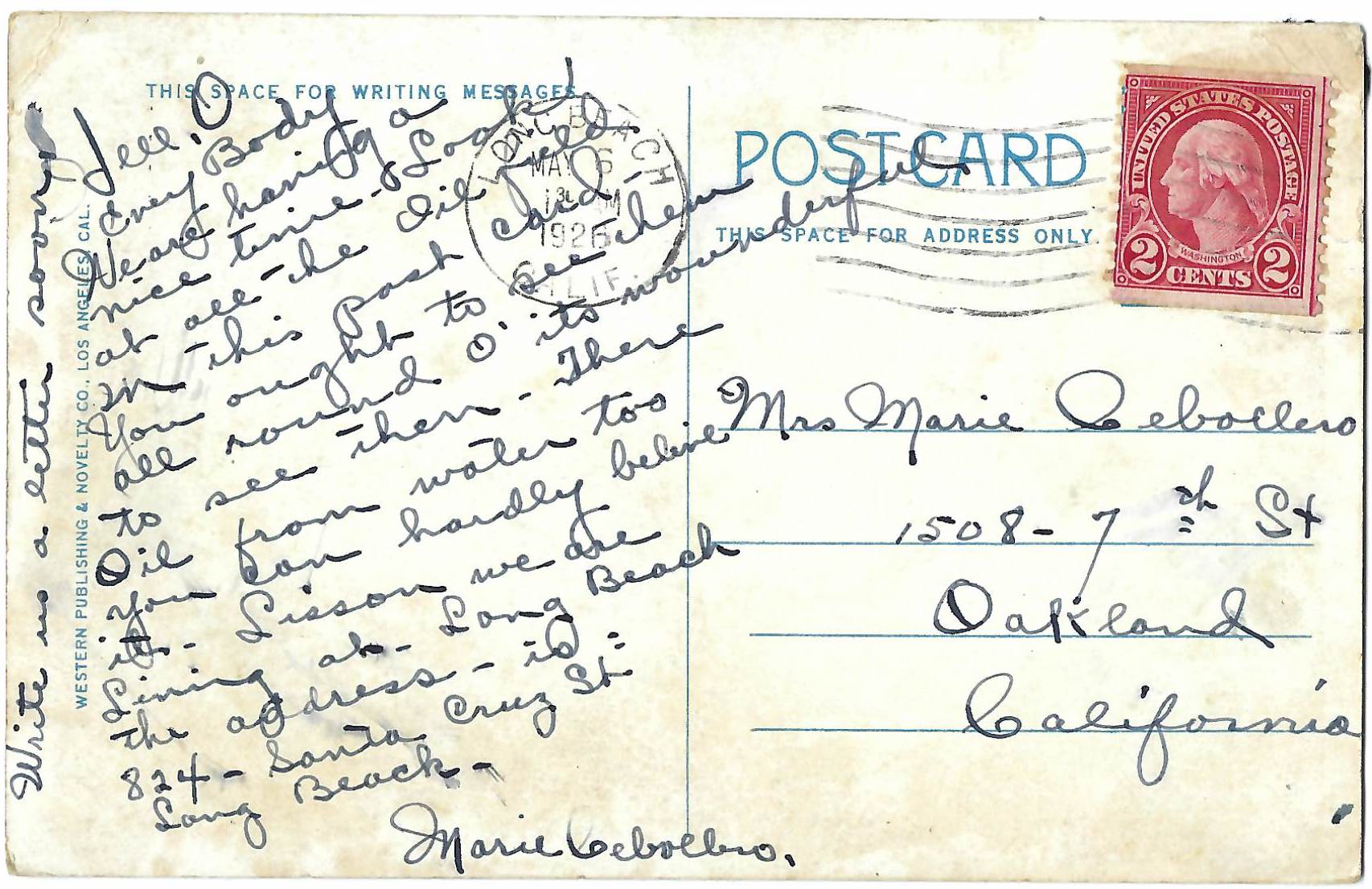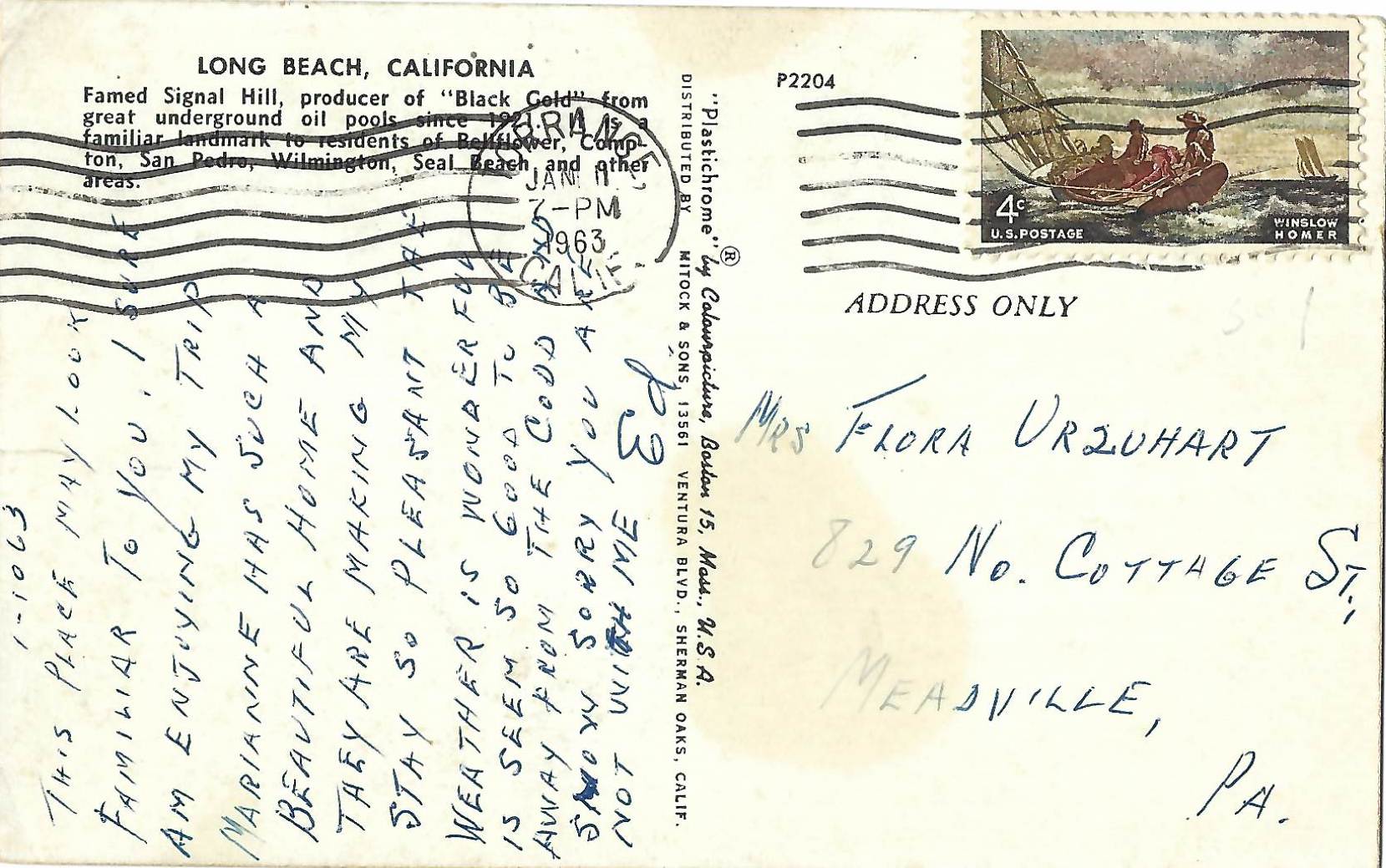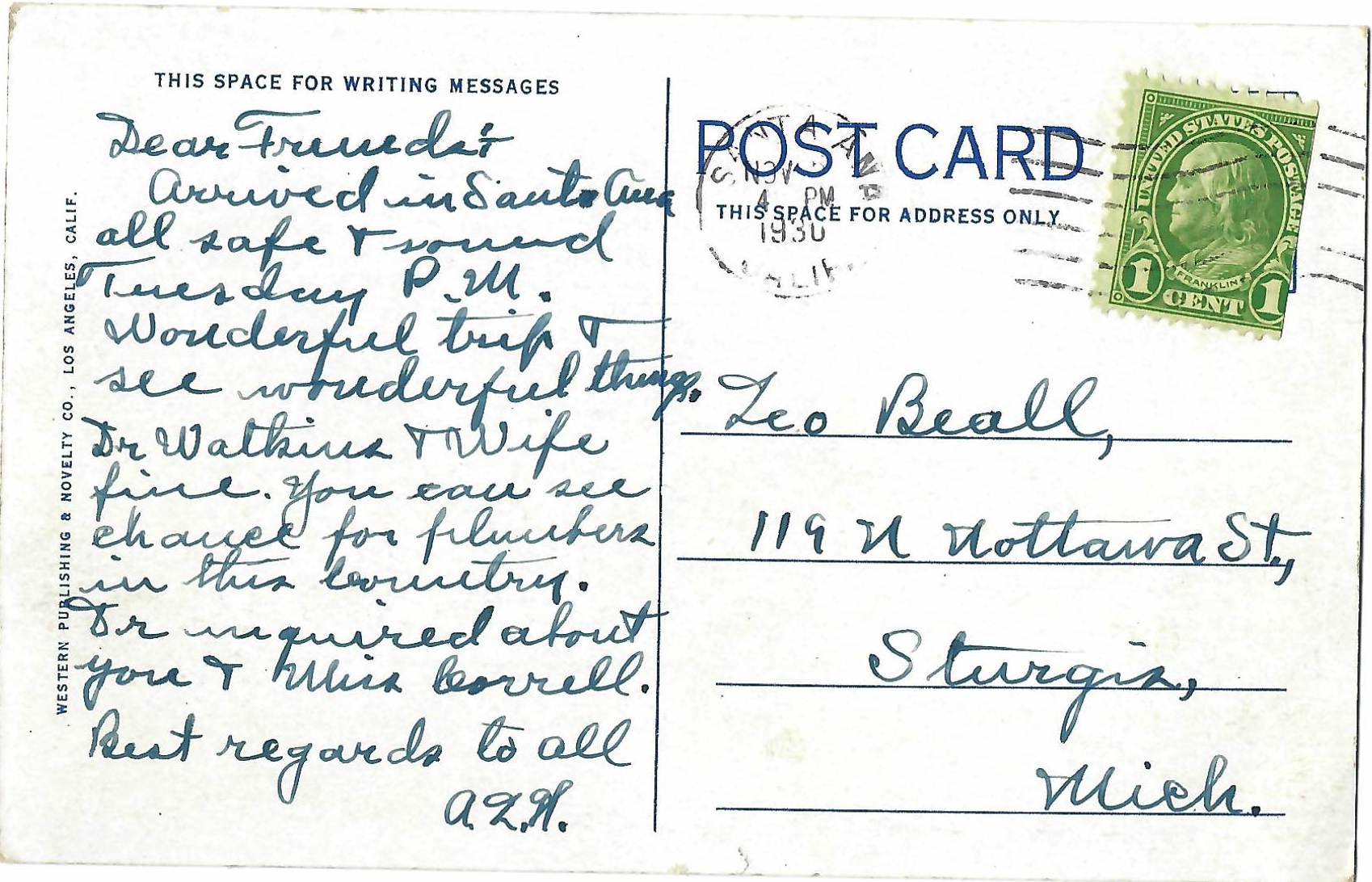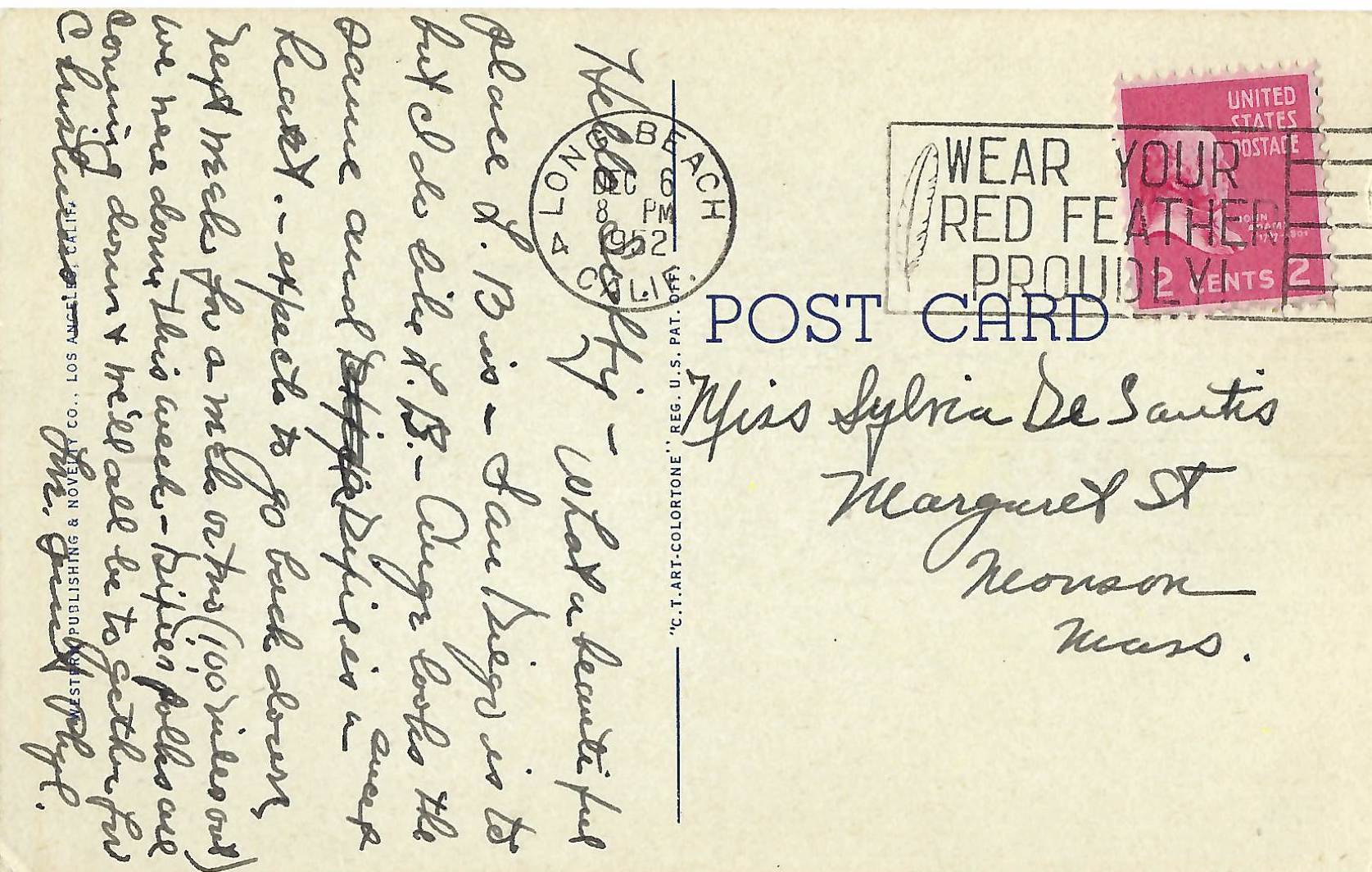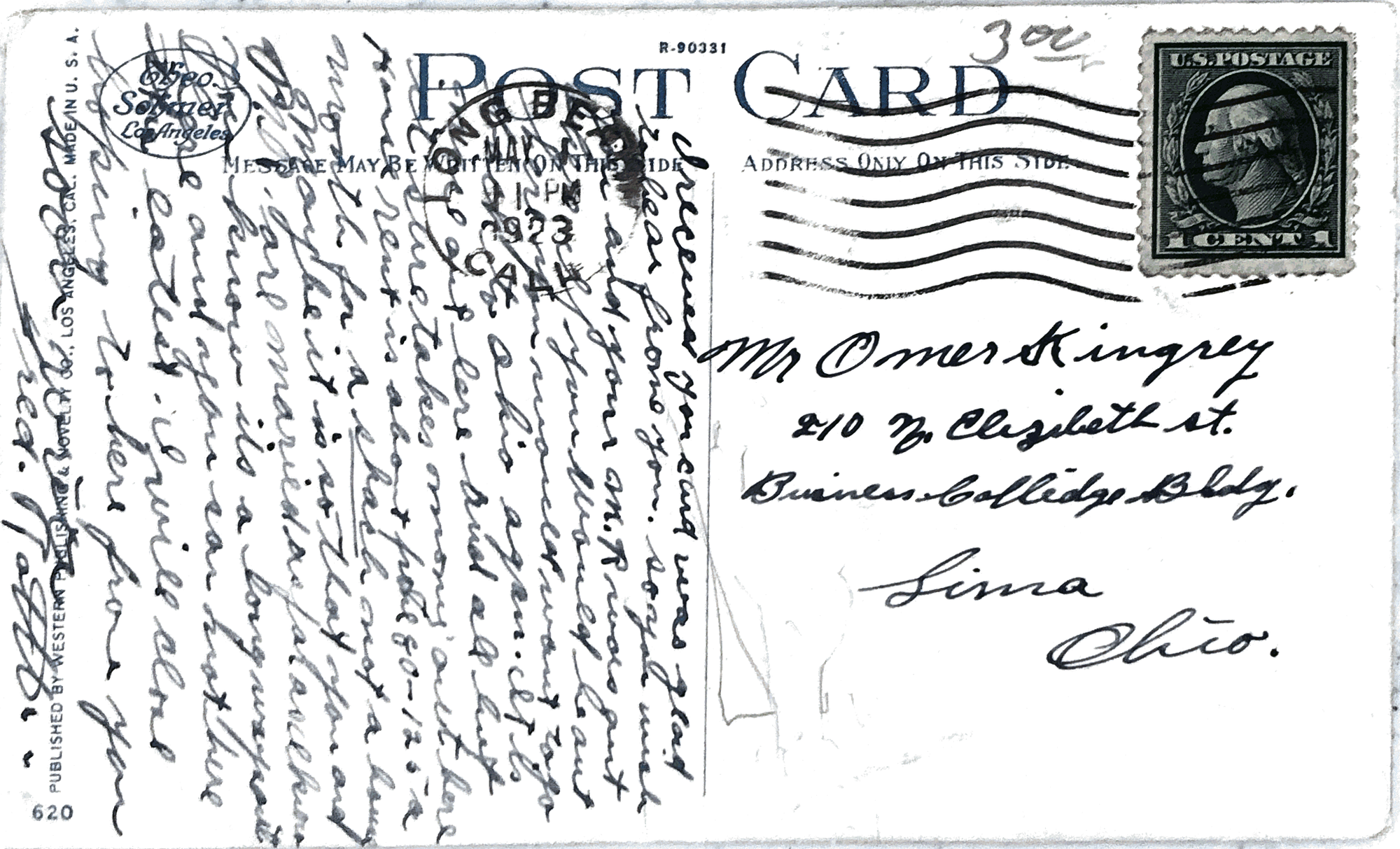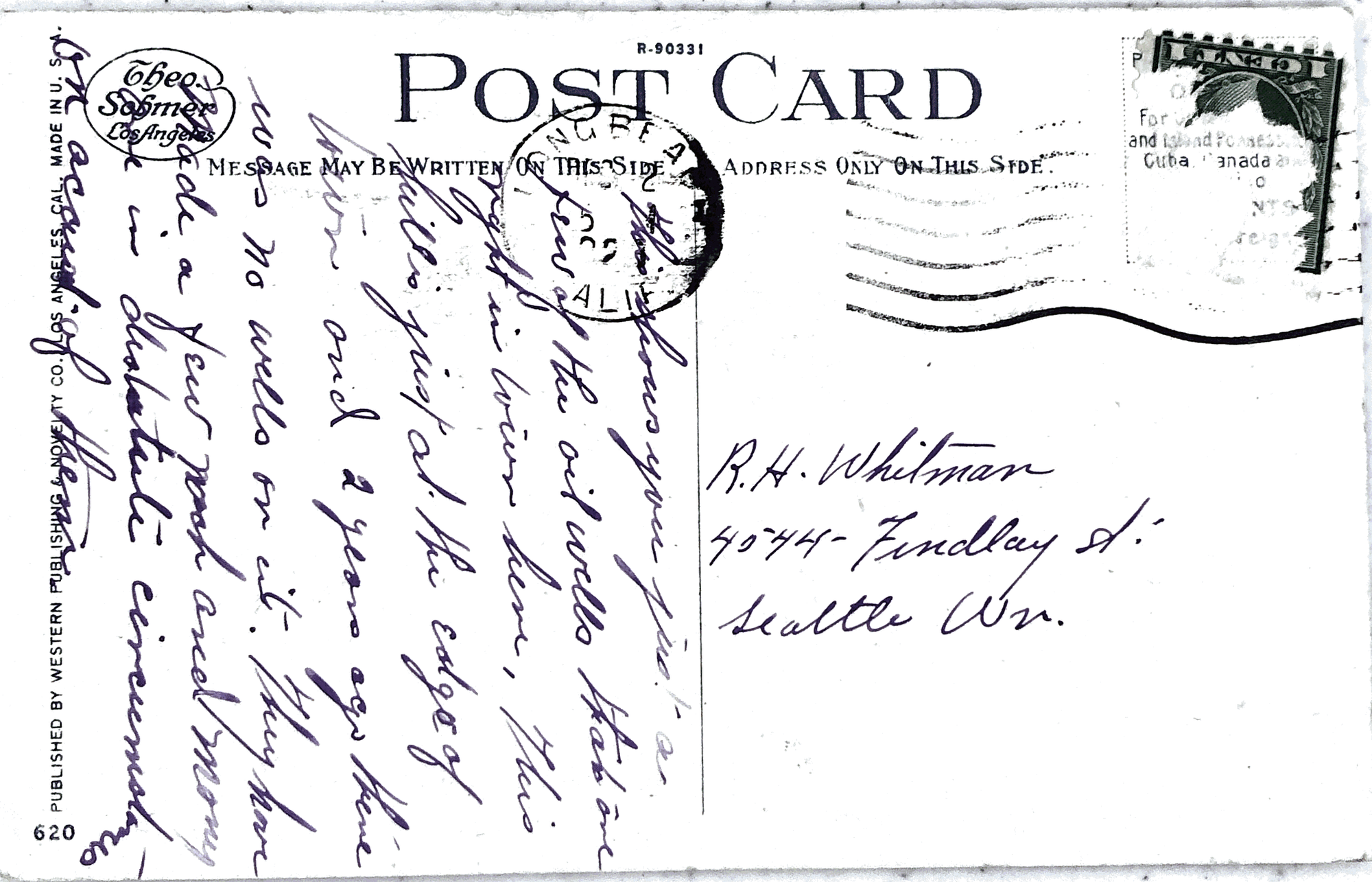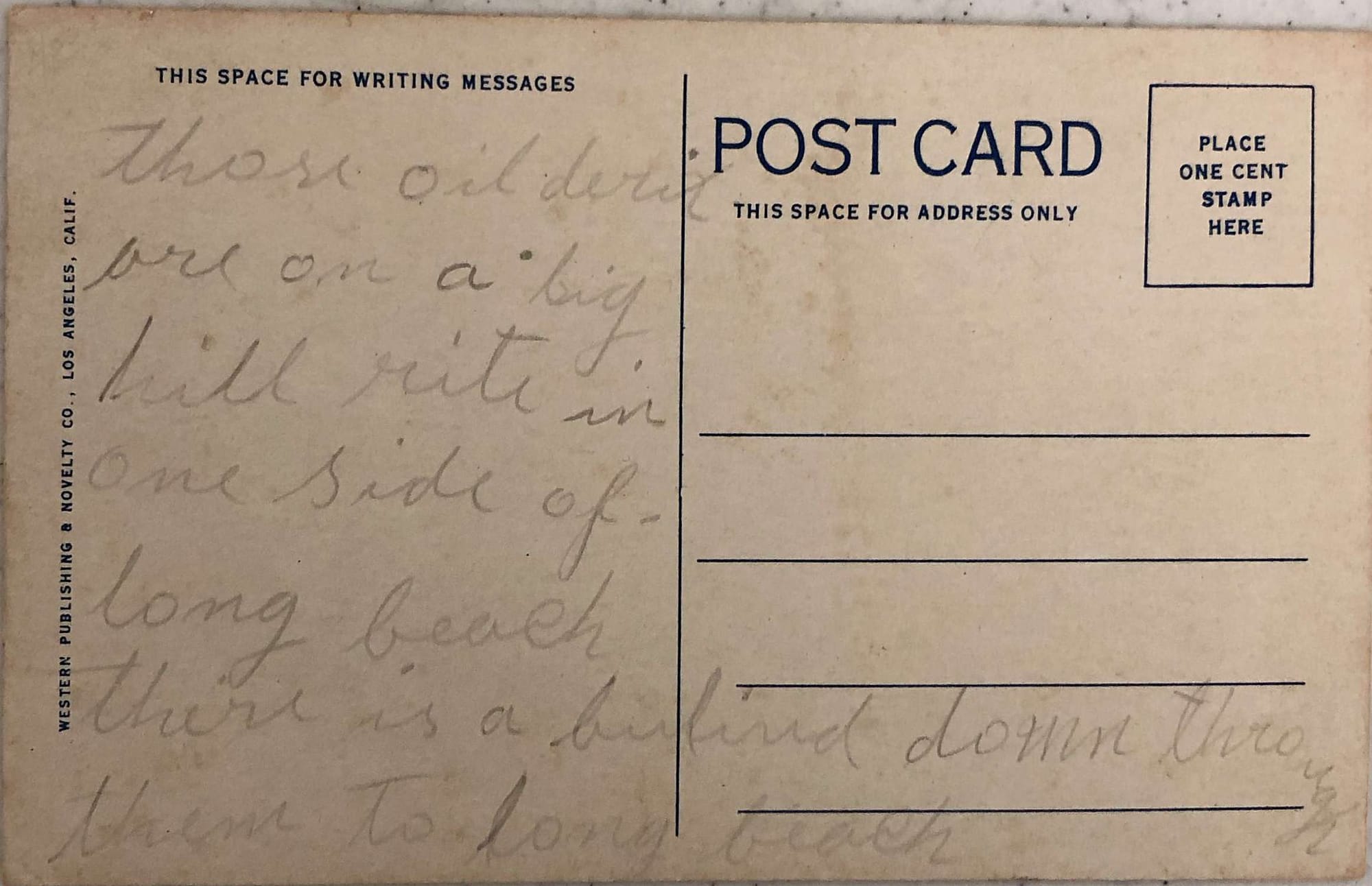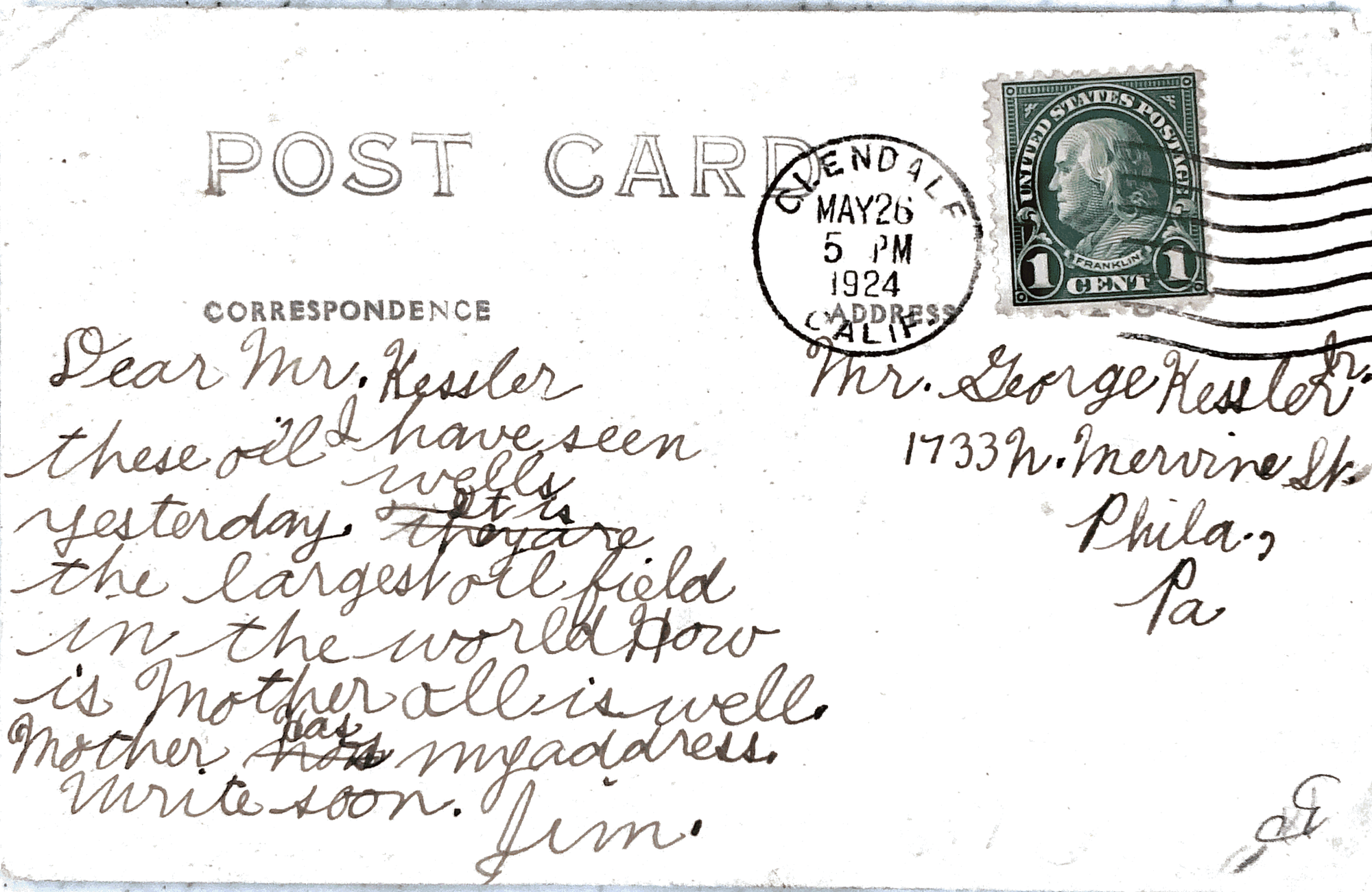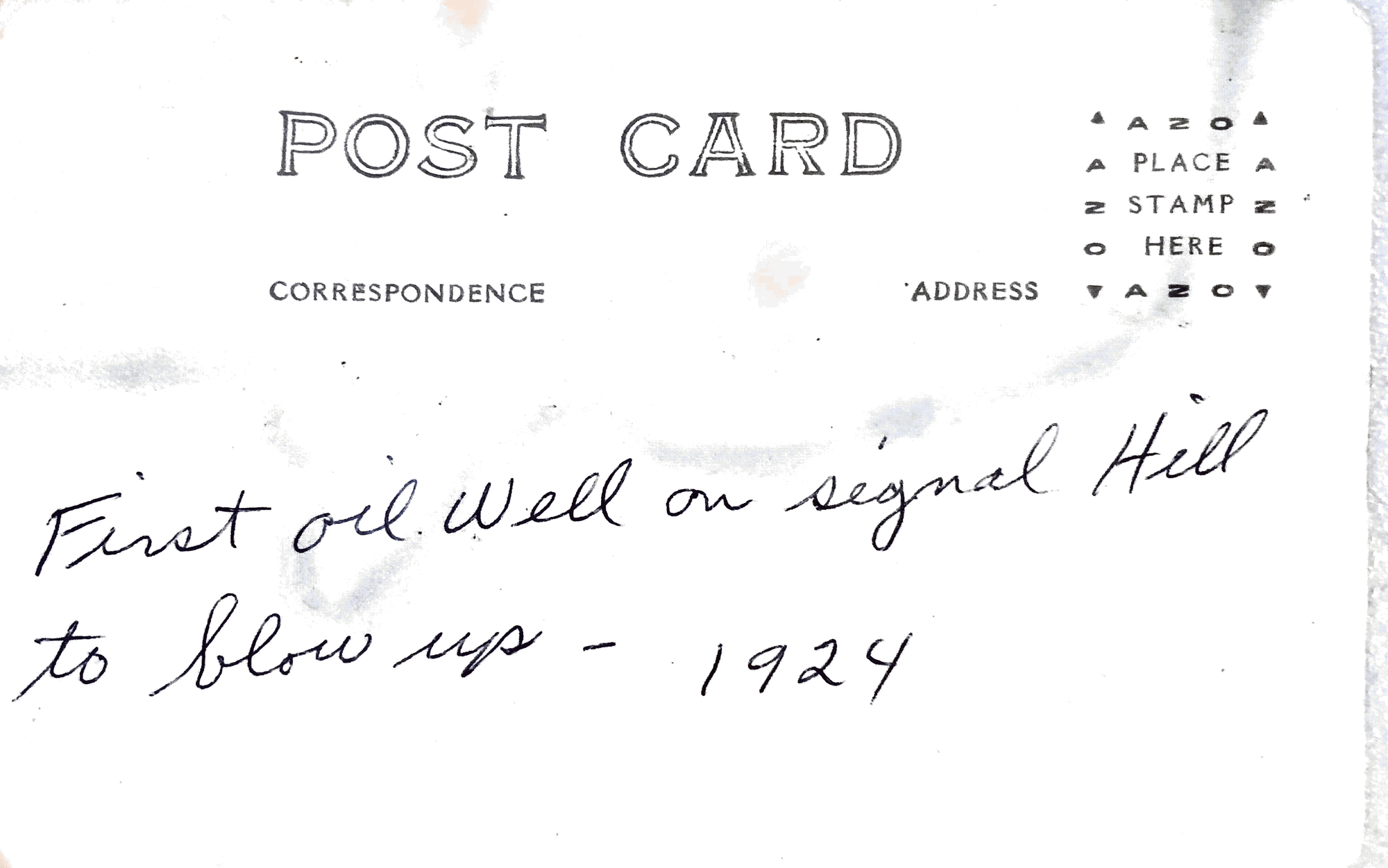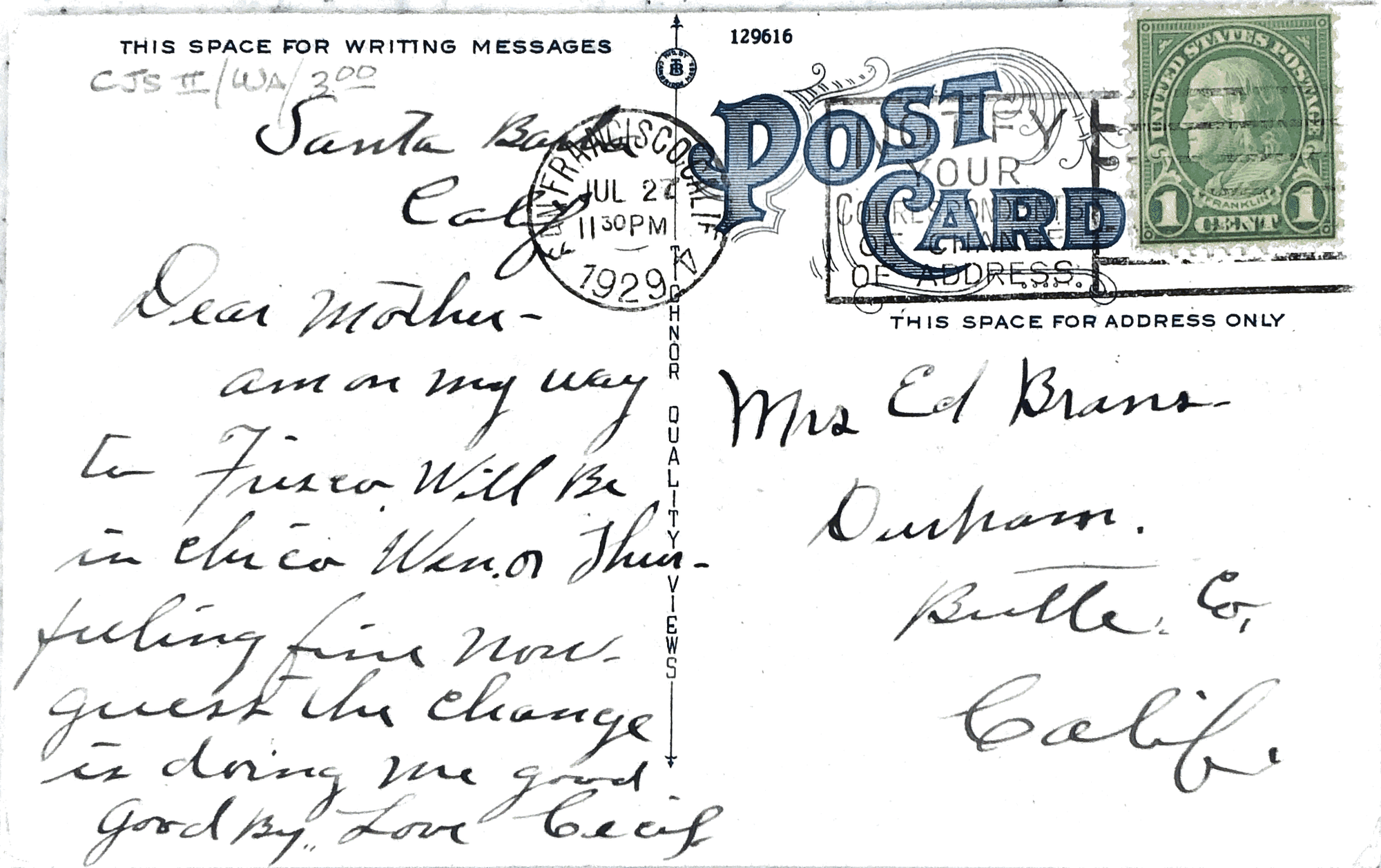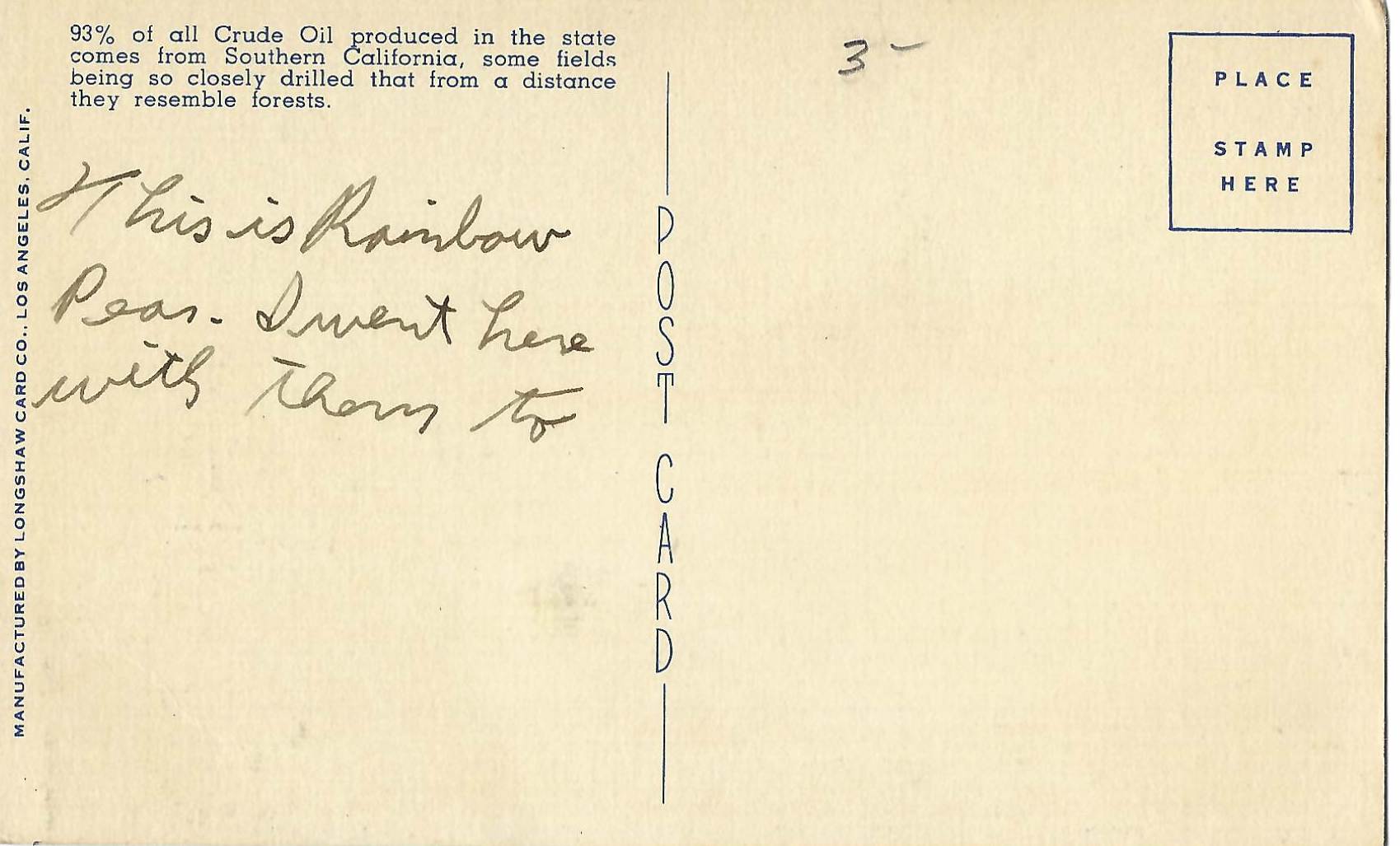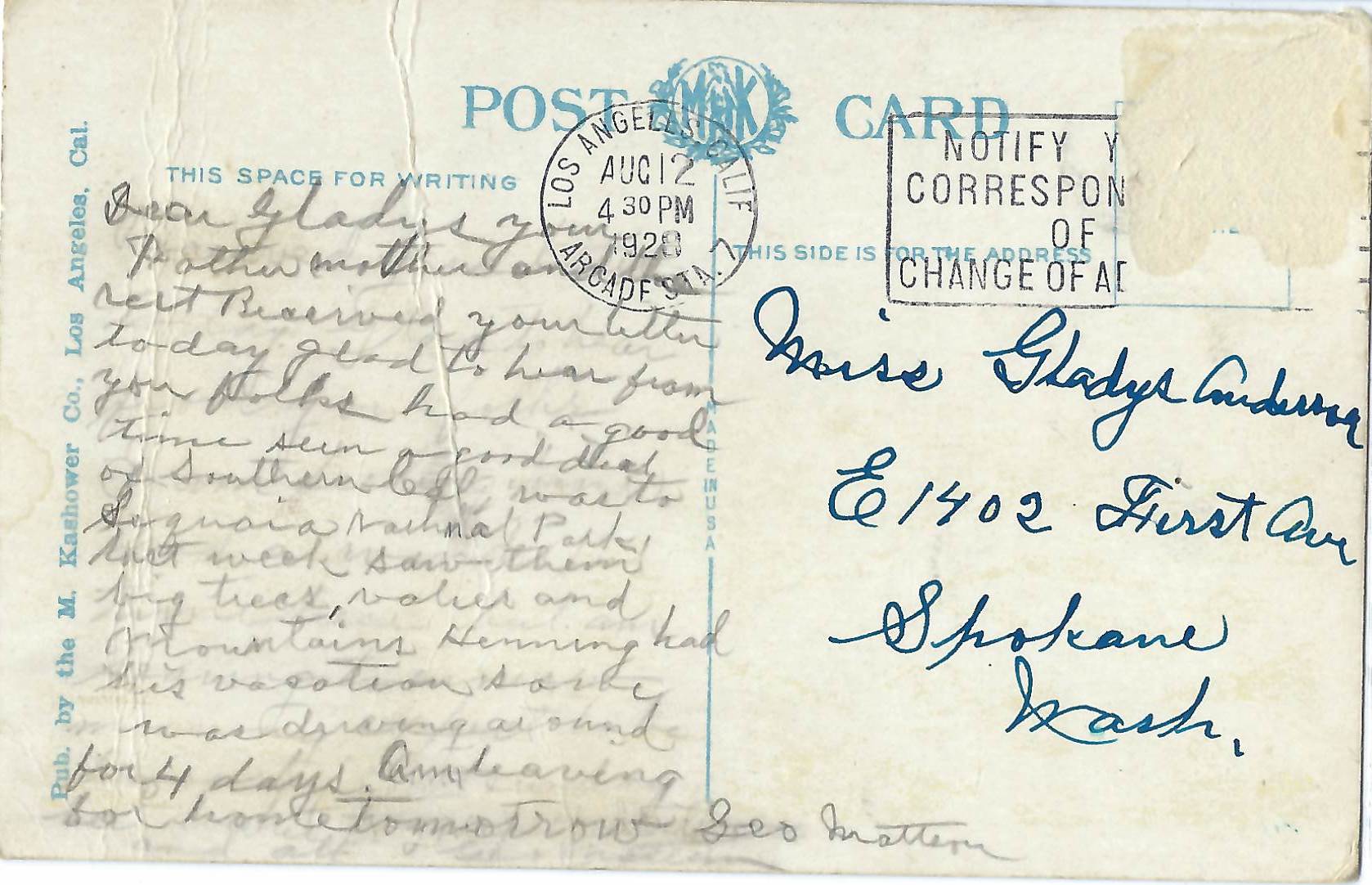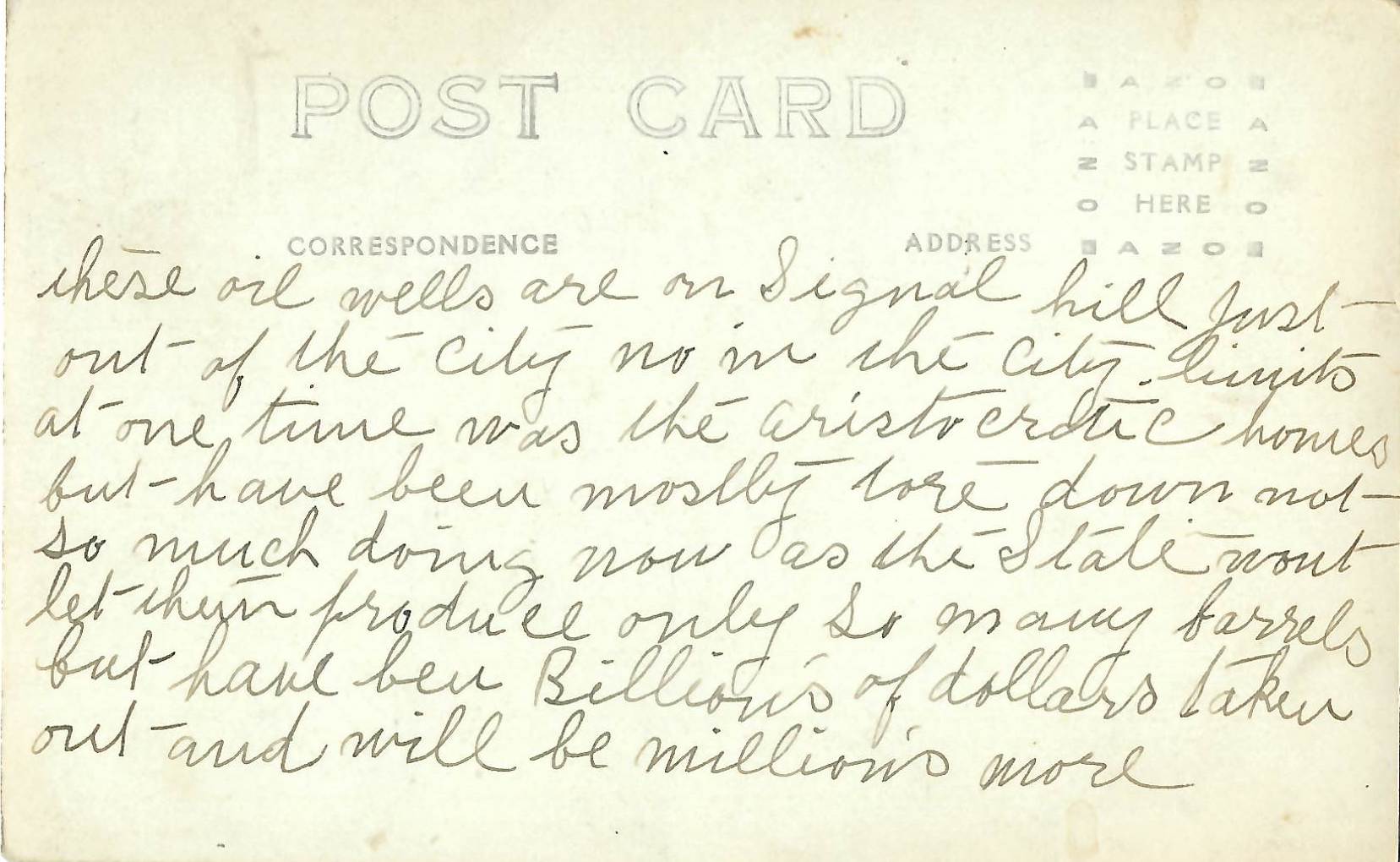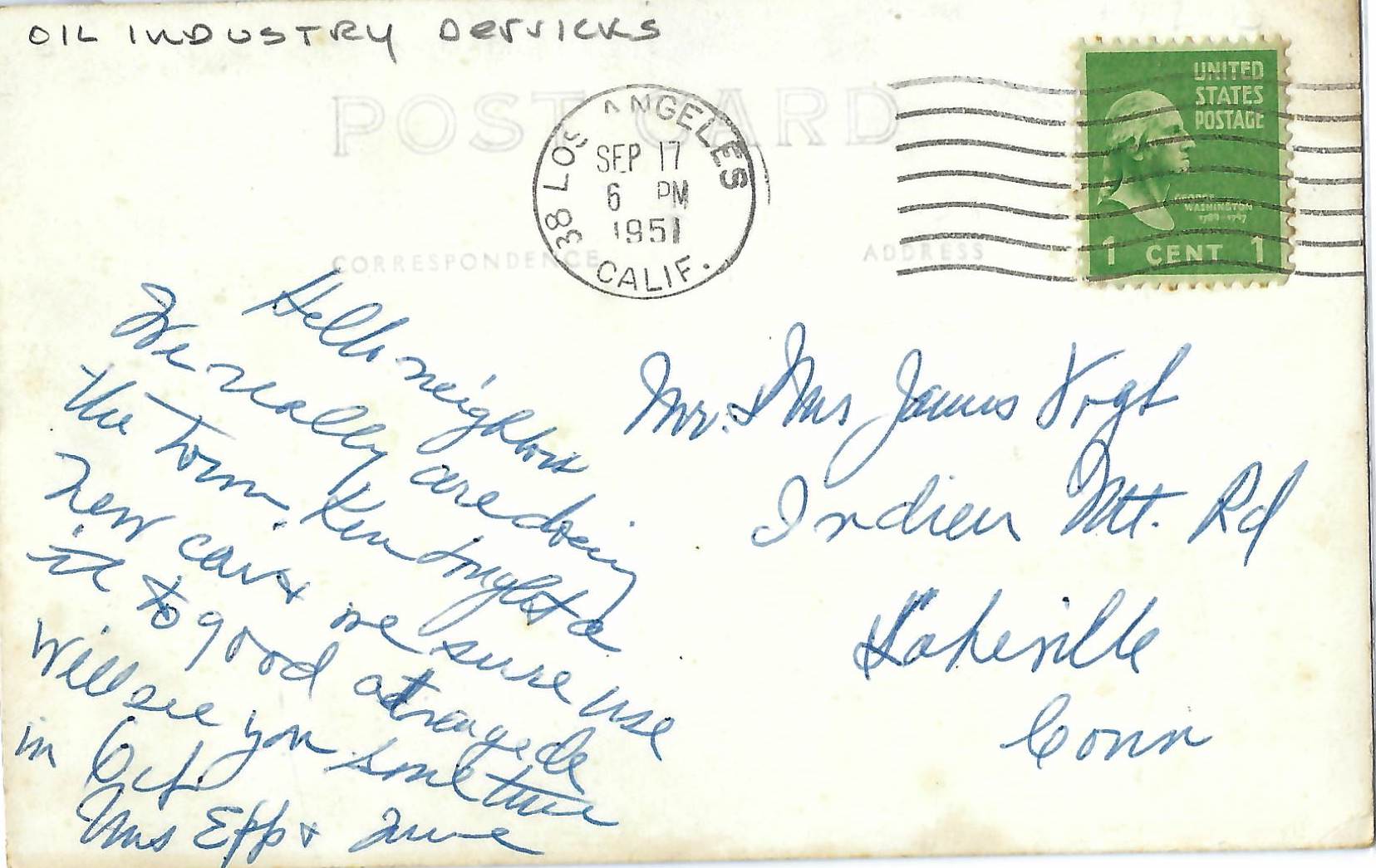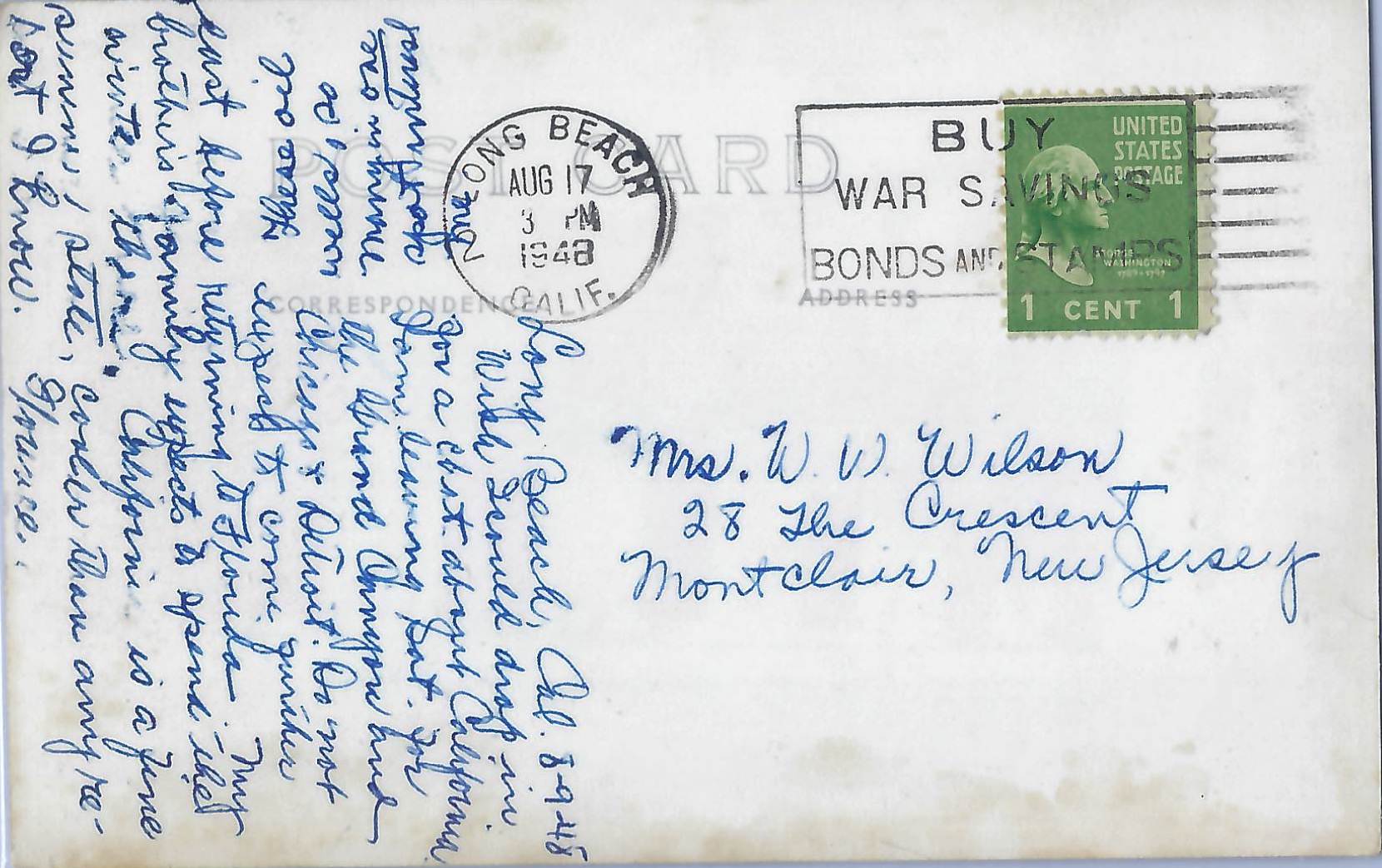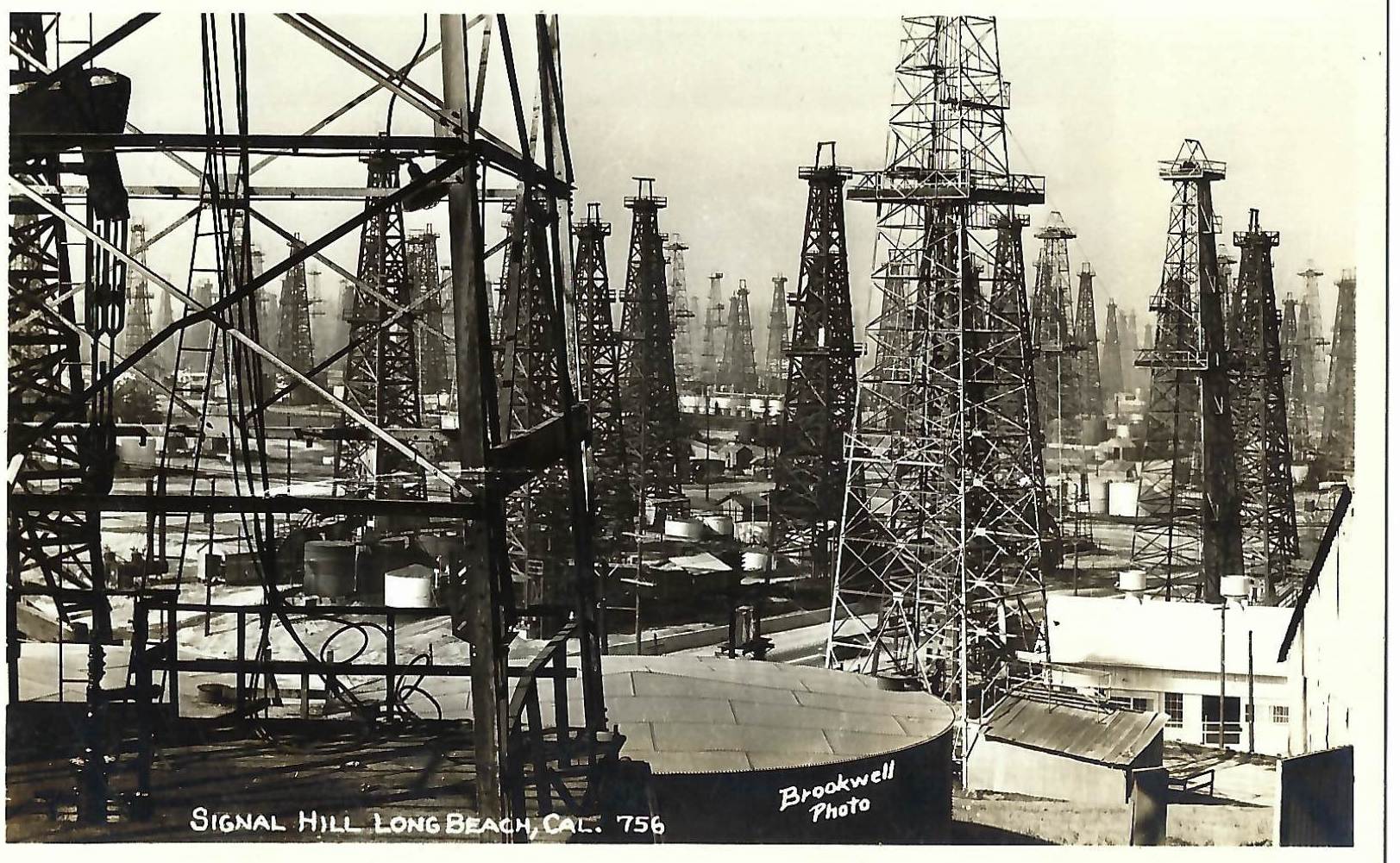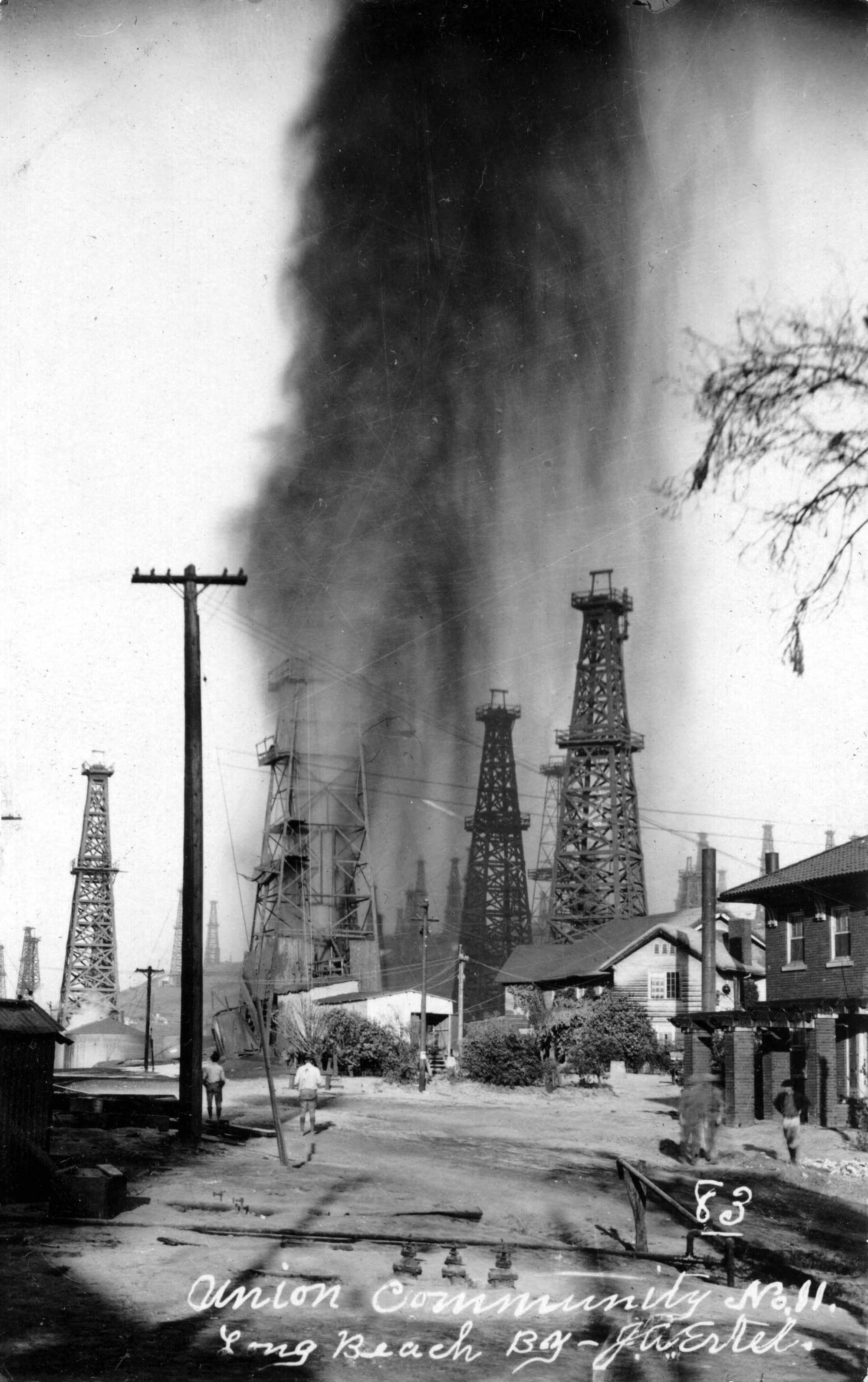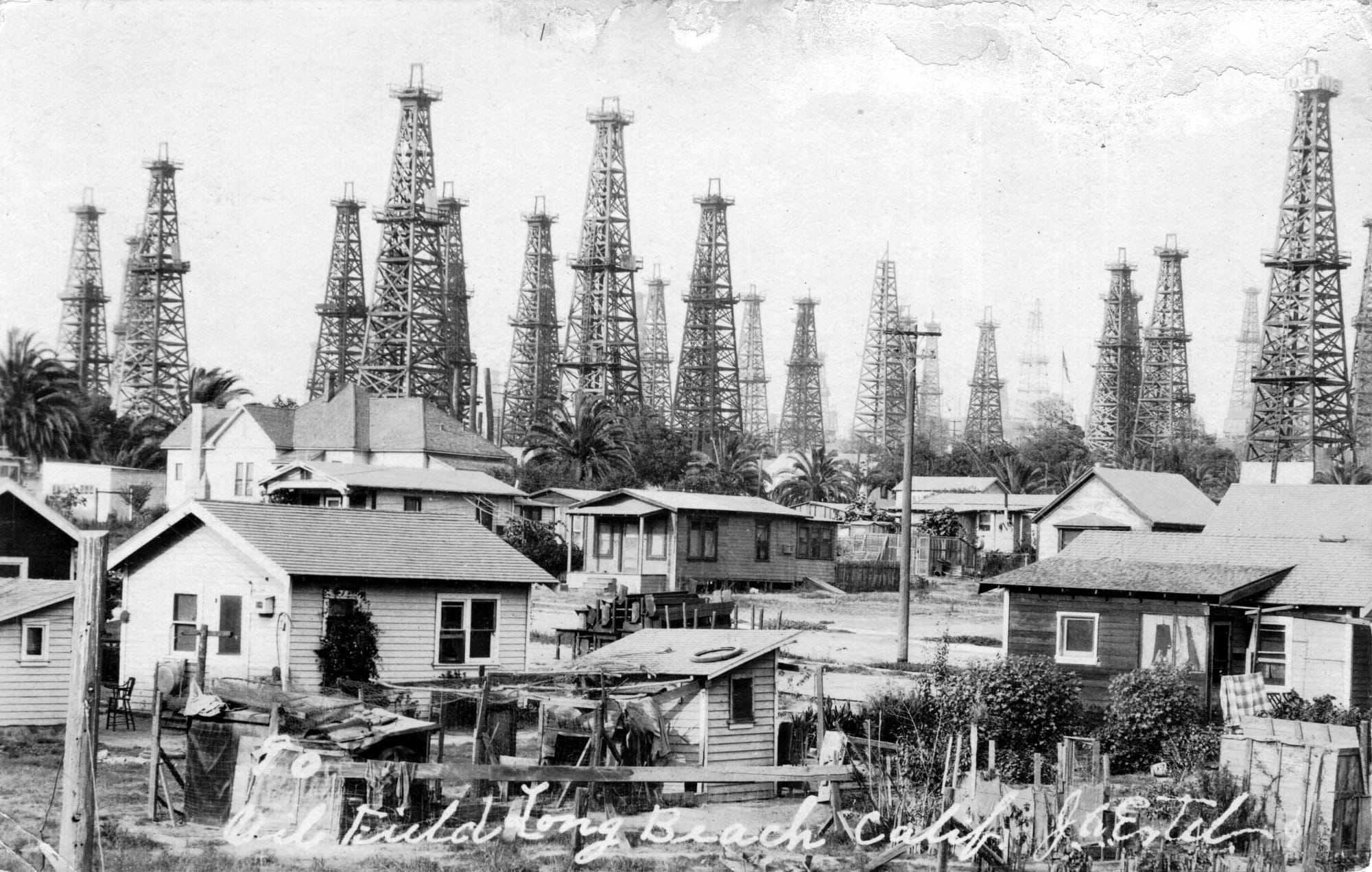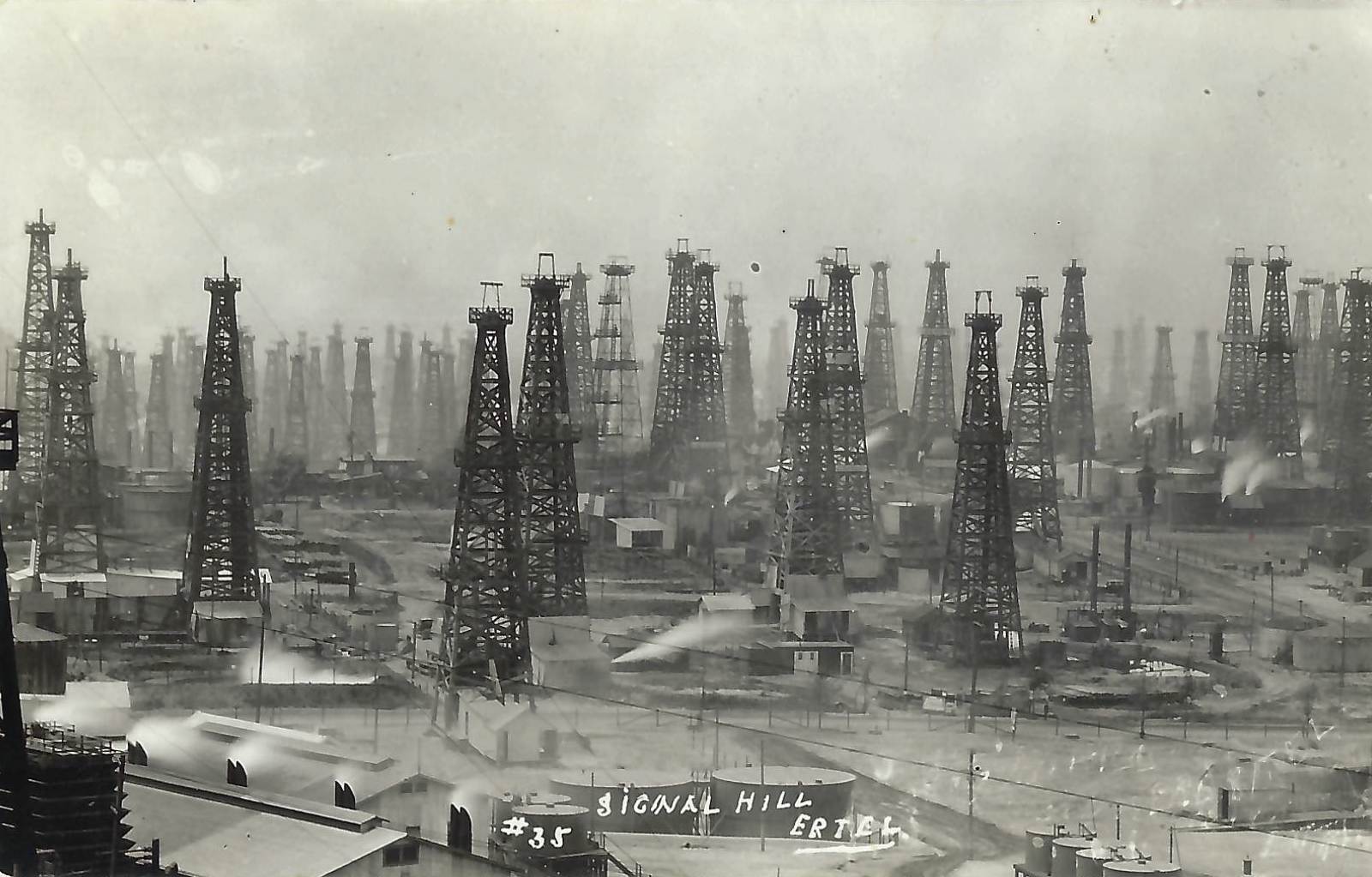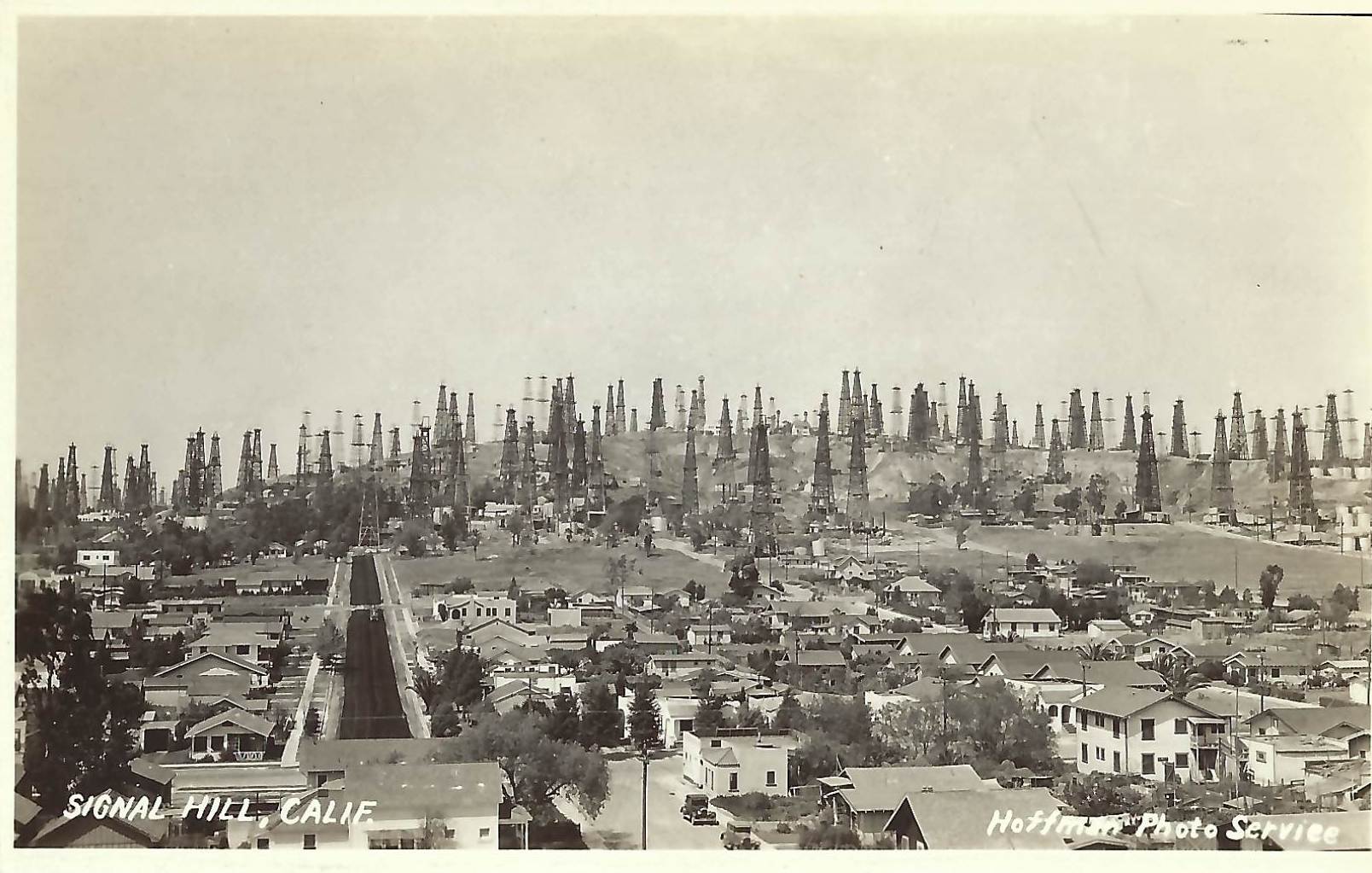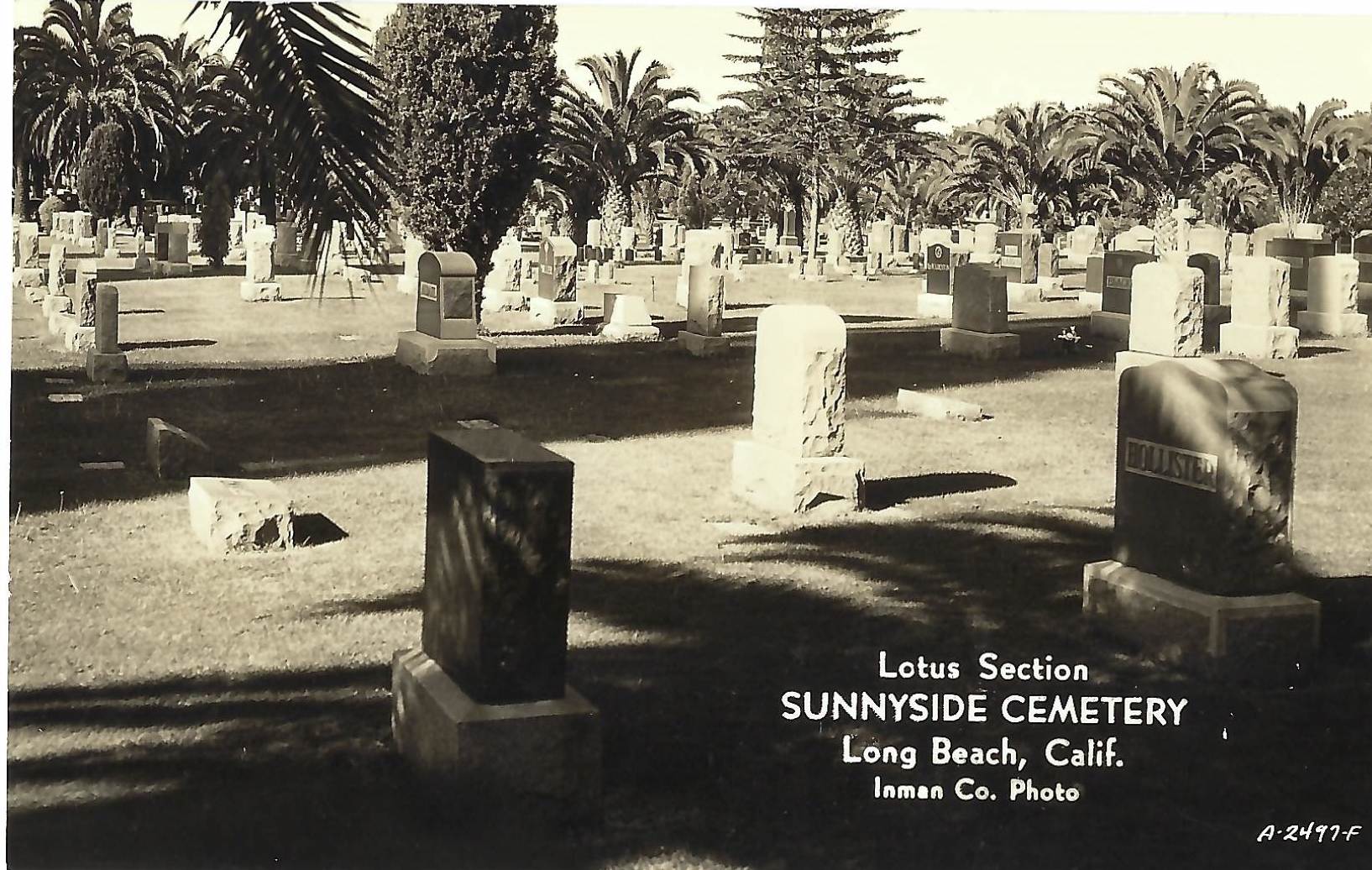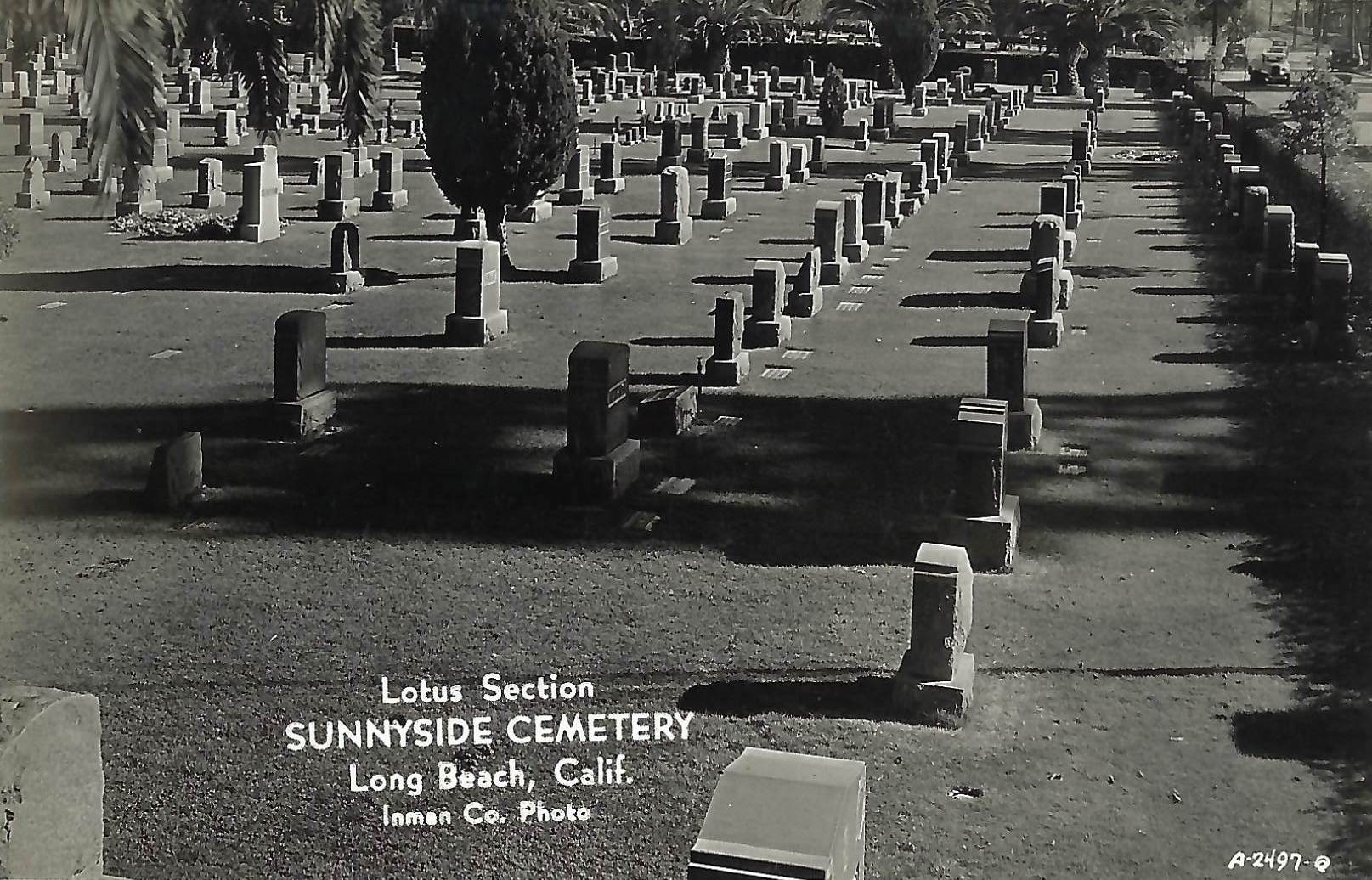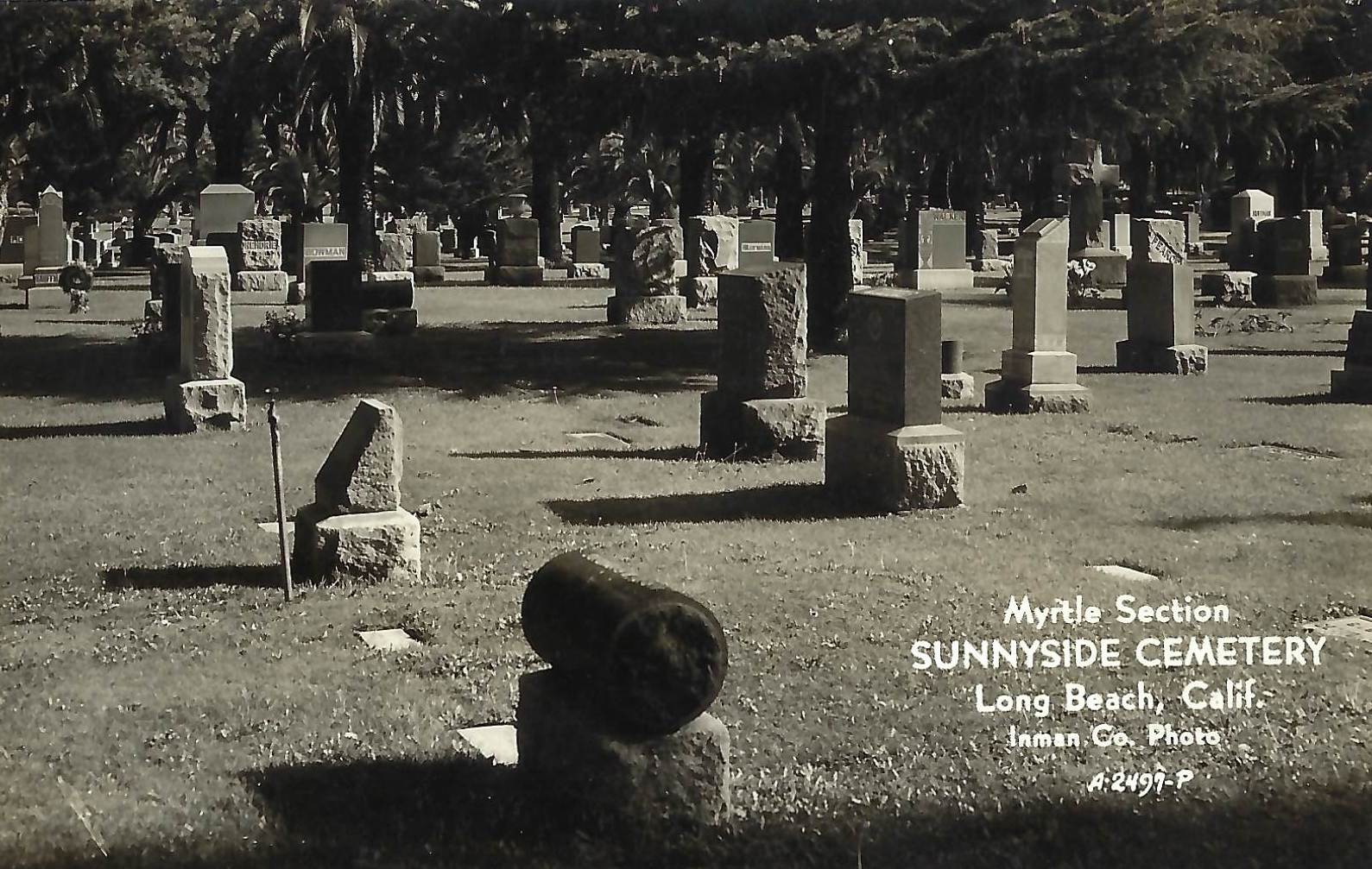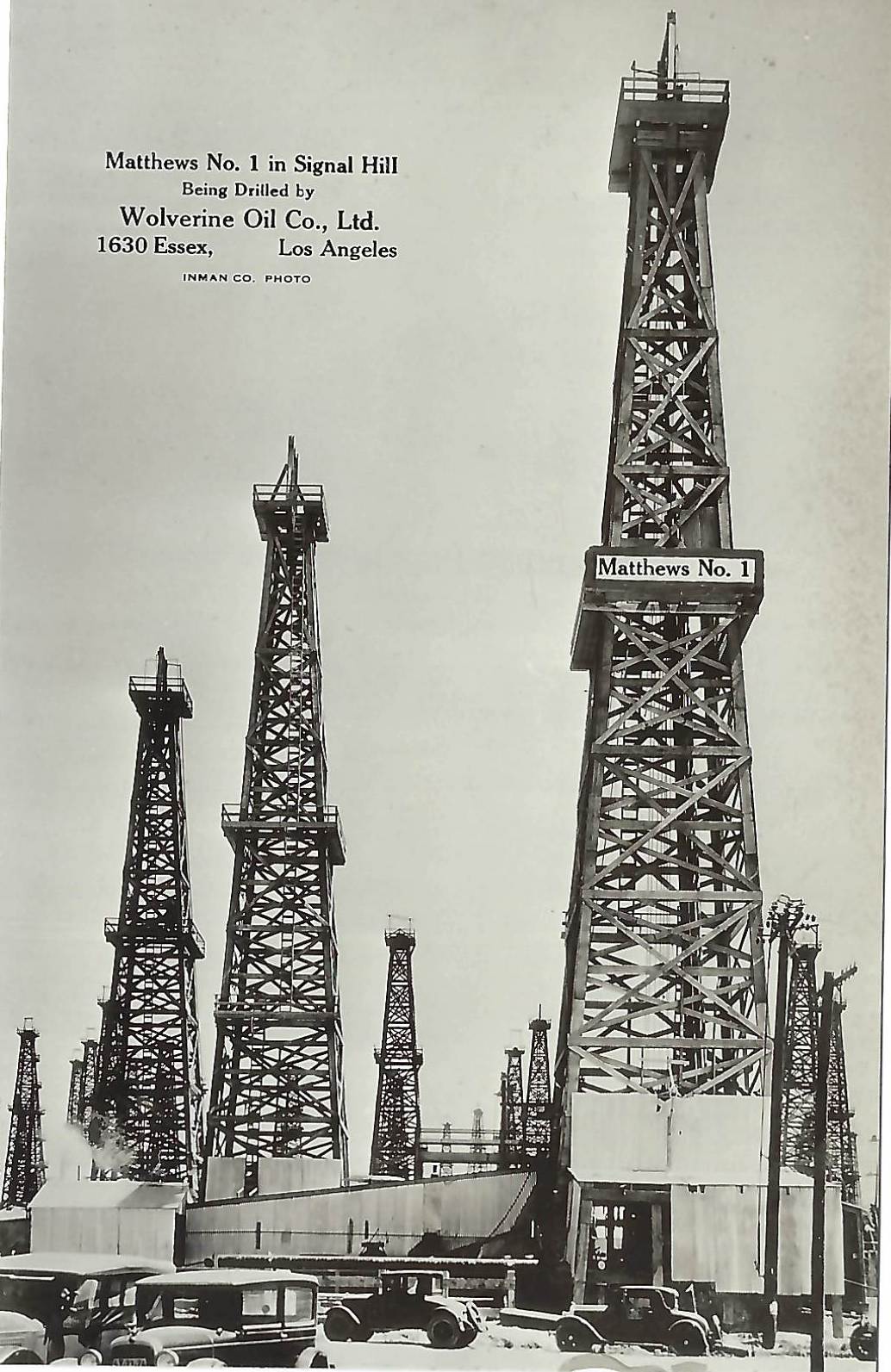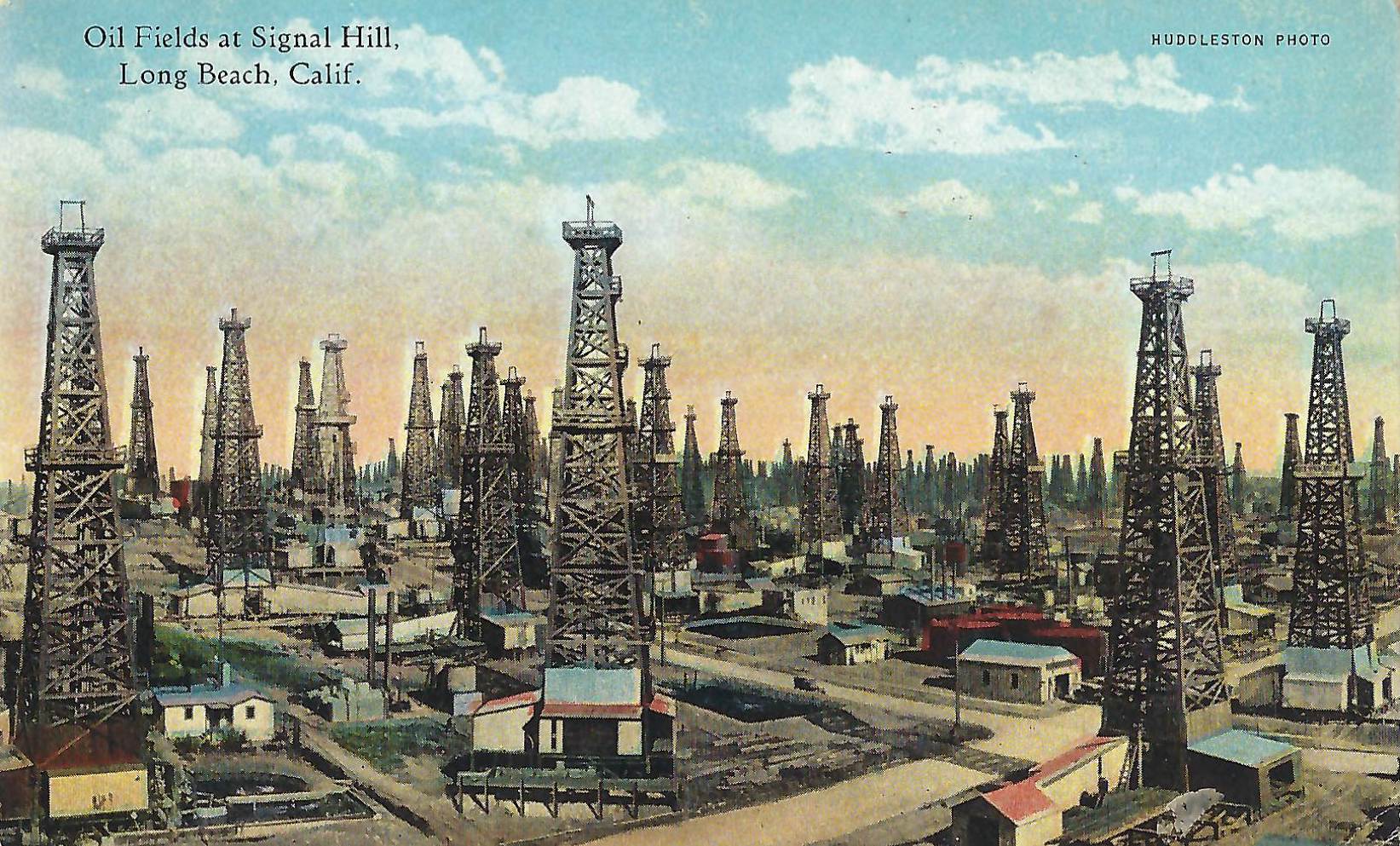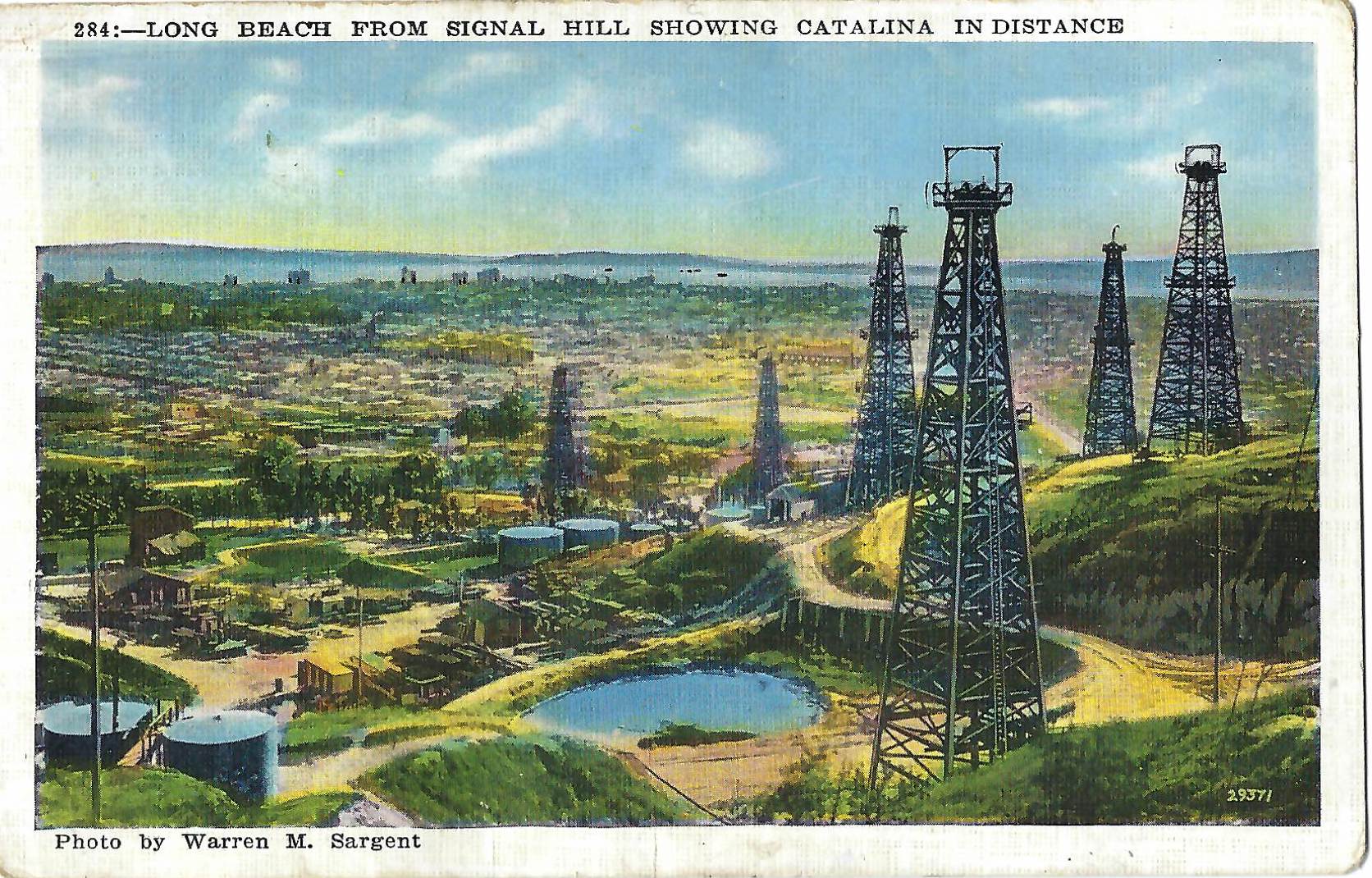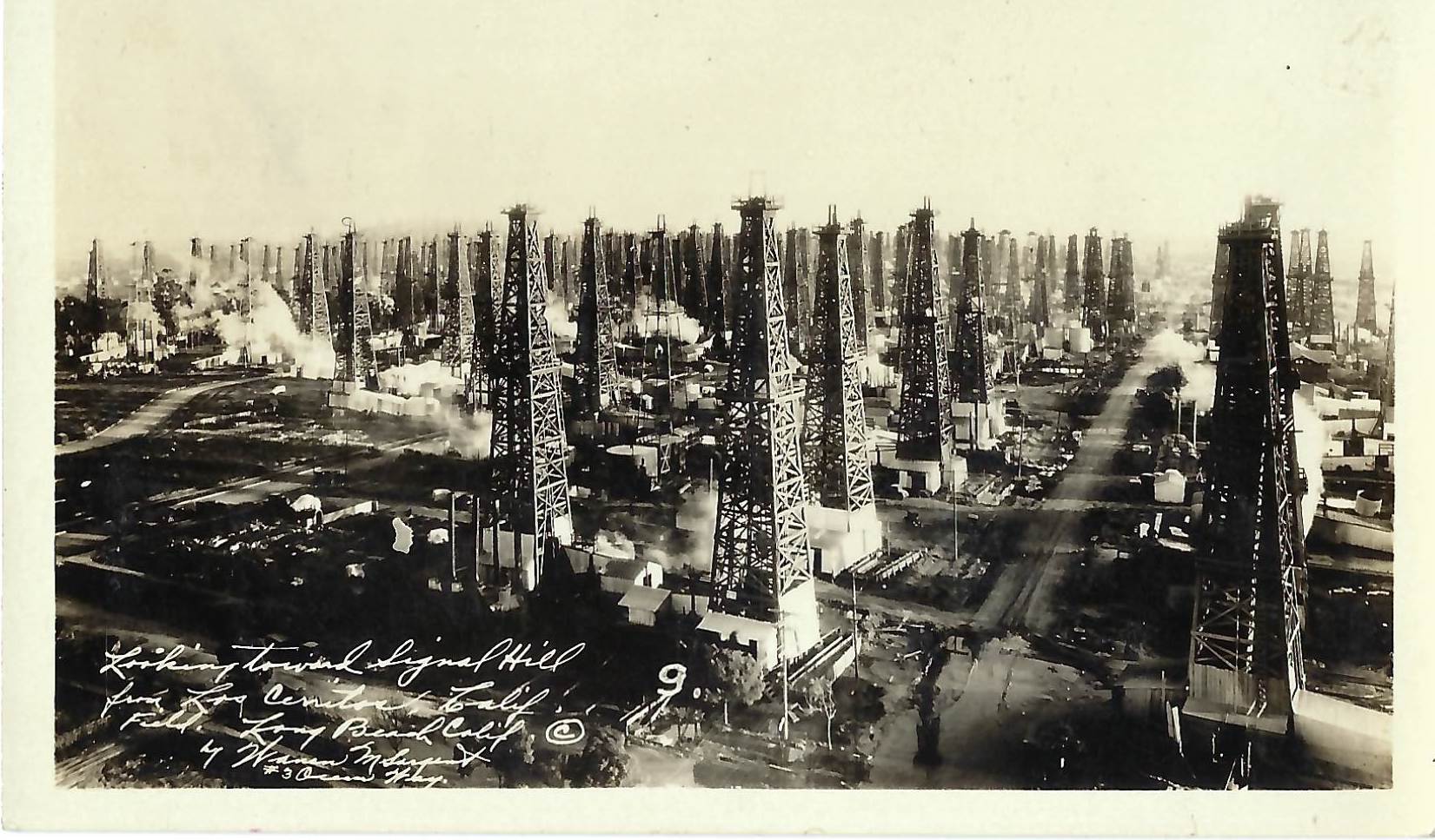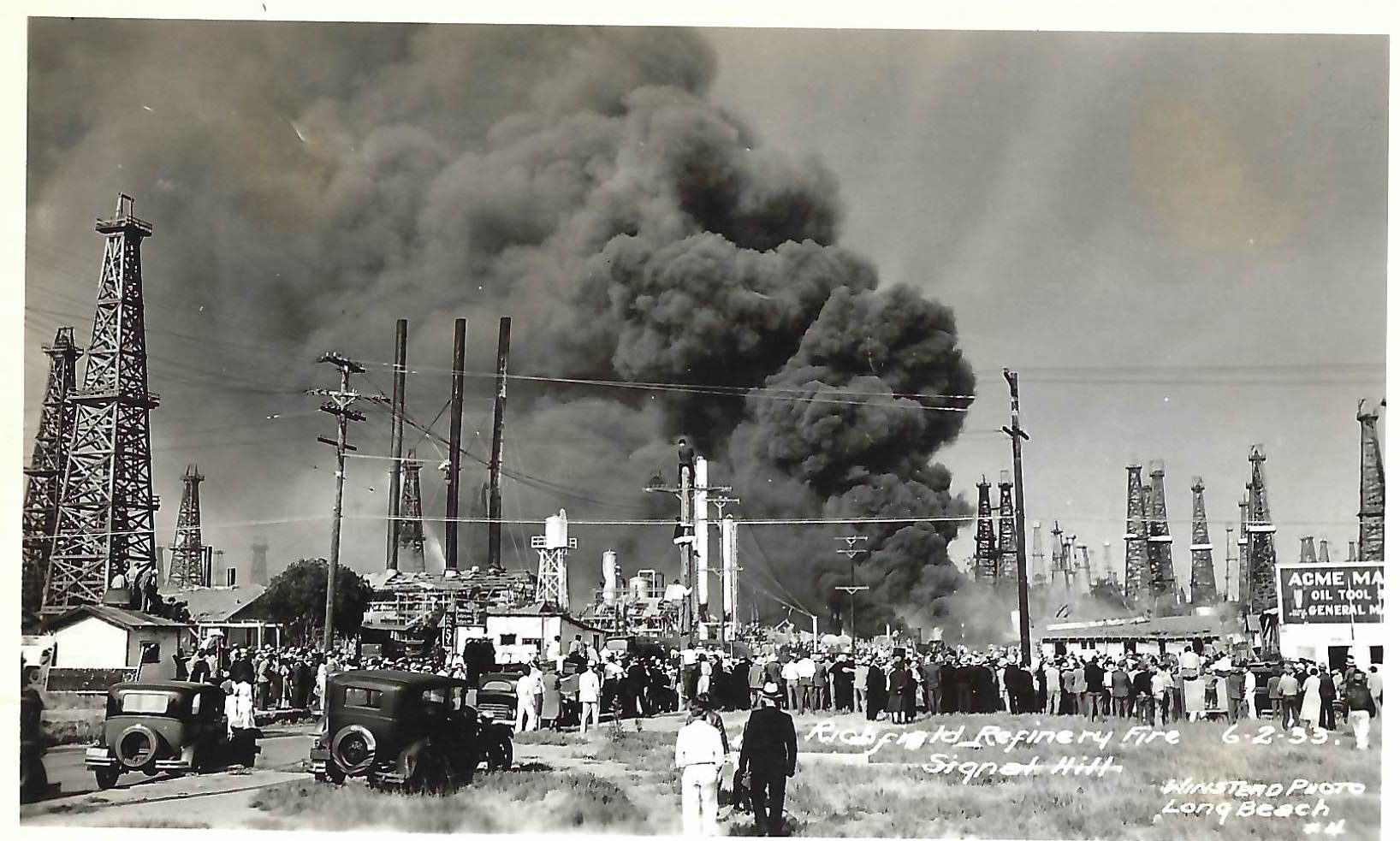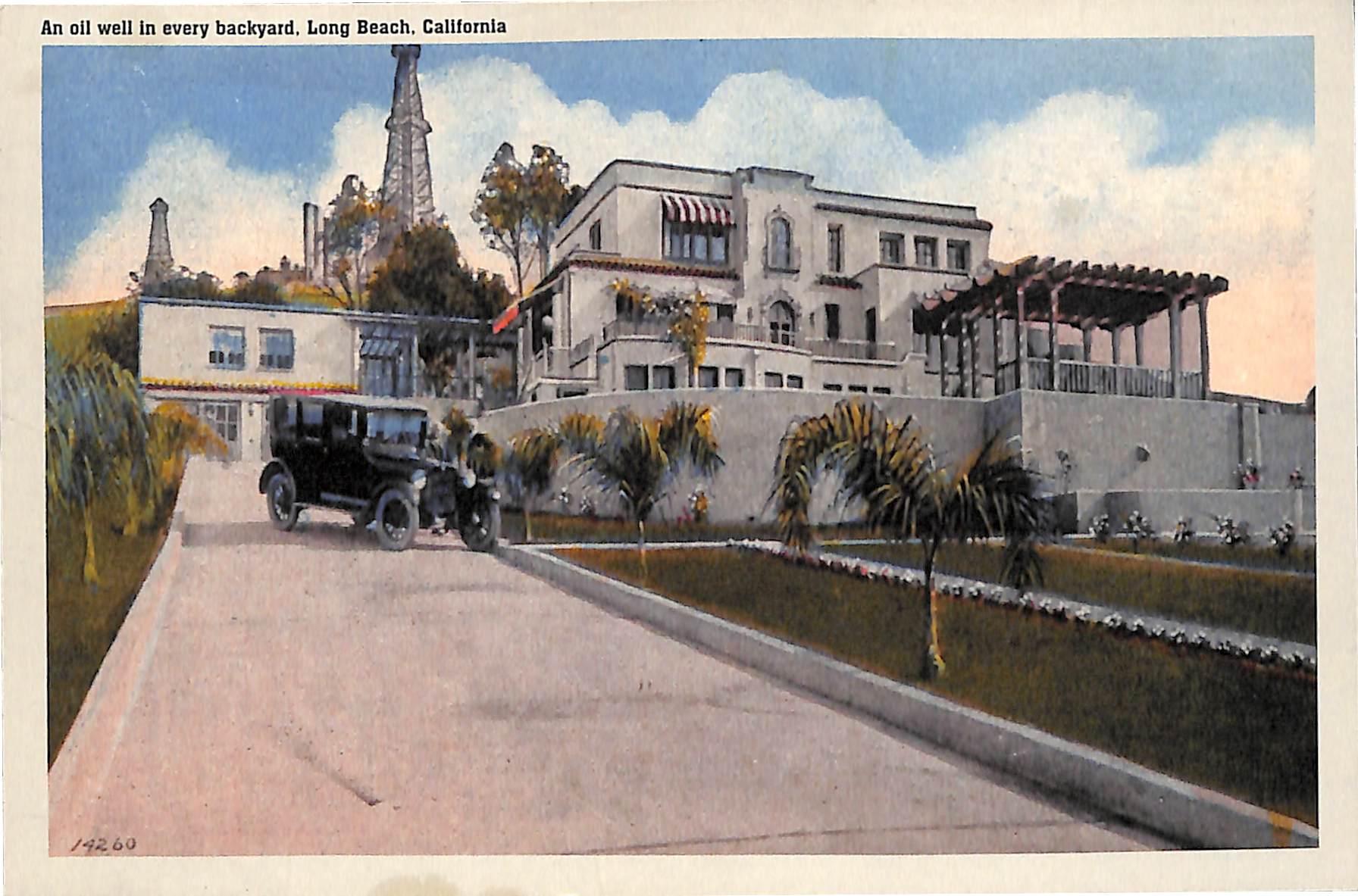
WHERE HISTORY NEVER DIES
Introduction

Hello! This website deals with Signal Hill Postcards and the oil discovery that created this particular city in Los Angeles County, California. This website will examine the Signal Hill Postcards and the photographs that made the postcards famous while telling stories about what life was like in Signal Hill. This website will also show the backsides of these postcards while describing a written history about what people were describing around the time the city was born. The second part of this website deals with the photographers who were taking these postcard photographs of Signal Hill.
history of Postcards in signal hill
The Real Photo Period was one of the more important periods for the postcard. These Real Photo Postcards were made using a Kodak Camera 3A. A simple photograph could be transformed by being glued onto cardstock, including a place to put an address, correspondence, and a stamp. The caption and photographers name on Real Photo Postcards are often handwritten and white in color. These captions were marked or scratched into the negative.[1] The Real Photo Postcards started around the turn of the 20th century. In Signal Hill there were a lot of postcards like this showing pictures of oil wells, fires, oil gushing out, or landscapes with oil derricks. There were several famous photographers who took pictures that were made into postcards. Some of these photographers were Huddleston, Brookwell Photos, Kashower, Sargent, Ertel, Inman, and Winstead. The back of the postcard of a Real Photo Postcard has no lines but it lists correspondence and address on it.
[1]“Real Photo Postcards-Collecting Vintage Real Photo Postcards.” Accessed August 20, 2021, http://postcardvalues.com/realphotopostcards.html.
The White Border postcards were created from 1915 to 1930. The White Border period started around WWI when American printers lacked the same technology as German printers who had dominated the printing press for postcards in the past. Due to this the quality of available postcards fell and people lost interest in collecting them. Soon printers began printing postcards with less ink creating a white border around the edge of the card.[1] Several postcards from Signal Hill used the White Border style. These particular photos were predominately oil wells.
[1]Smithsonian Institution Archives “Greetings From the Smithsonian-A Postcard History-White Border Period:1915-1930,” Accessed August 20, 2021, https://siarchives.si.edu/history/featuredtopics/postcard/postcard-history.
The next period of postcards was the Linen Period from 1930 to 1945. During this period printers produced postcards with high rag content, which made the picture look like it was printed on linen rather the paper.[1] One of the most famous printers in this era was the Curt Teich and Co. This company first started producing postcards in 1931 and the company thrived because it had a high rate of production. On the back of these postcards there is generally a description of what the picture is on the opposite side. There were several postcards from Signal Hill that were a part of the linen period.
[1]Smithsonian Institution Archives "Greetings From the Smithsonian-A Postcard History-Linen Period: 1930-1945," Accessed August 20, 2021, https://siarchives.si.edu/history/featuredtopics/postcard/postcard-history.
The Photochrome postcards are the last type of postcards and these started in the late 1930s and are the types of postcards we still see today. During WWII not many people were sending postcards, but after the war the production of postcards gained steam again. These postcards were made in color and closely resembled photographs. One of the first companies to use the Photochrome was the Union Oil Company and they would sell these cards in their western service stations. Unfortunately, these postcards started to fade into obscurity because people began sending emails or E-cards to each other instead.
[1]“Real Photo Postcards-Collecting Vintage Real Photo Postcards.” Accessed August 20, 2021, http://postcardvalues.com/realphotopostcards.html.
The White Border postcards were created from 1915 to 1930. The White Border period started around WWI when American printers lacked the same technology as German printers who had dominated the printing press for postcards in the past. Due to this the quality of available postcards fell and people lost interest in collecting them. Soon printers began printing postcards with less ink creating a white border around the edge of the card.[1] Several postcards from Signal Hill used the White Border style. These particular photos were predominately oil wells.
[1]Smithsonian Institution Archives “Greetings From the Smithsonian-A Postcard History-White Border Period:1915-1930,” Accessed August 20, 2021, https://siarchives.si.edu/history/featuredtopics/postcard/postcard-history.
The next period of postcards was the Linen Period from 1930 to 1945. During this period printers produced postcards with high rag content, which made the picture look like it was printed on linen rather the paper.[1] One of the most famous printers in this era was the Curt Teich and Co. This company first started producing postcards in 1931 and the company thrived because it had a high rate of production. On the back of these postcards there is generally a description of what the picture is on the opposite side. There were several postcards from Signal Hill that were a part of the linen period.
[1]Smithsonian Institution Archives "Greetings From the Smithsonian-A Postcard History-Linen Period: 1930-1945," Accessed August 20, 2021, https://siarchives.si.edu/history/featuredtopics/postcard/postcard-history.
The Photochrome postcards are the last type of postcards and these started in the late 1930s and are the types of postcards we still see today. During WWII not many people were sending postcards, but after the war the production of postcards gained steam again. These postcards were made in color and closely resembled photographs. One of the first companies to use the Photochrome was the Union Oil Company and they would sell these cards in their western service stations. Unfortunately, these postcards started to fade into obscurity because people began sending emails or E-cards to each other instead.
Eastman Kodak 3A Folding Camera

The 3A Folding Pocket Kodak, Eastman Kodak's first postcard format camera, was introduced in 1903 and sold until 1915. The image above shows a box of Kodak Verichrome Pan Six Exposure V122 film dated from 1944, an exposed roll of 122 film on an all-metal spool, and an early 122 film spool with the wooden core. Later, film spools were made entirely of metal while earlier spools were made of both wood and metal. The F.P.K. Automatic Shutter was equipped with a pneumatic release. The original rubber hose and squeeze ball are still attached to the pneumatic cylinder in this picture. The shutter has one instantaneous speed plus time and bulb. The pneumatic release can prevent the camera from shaking when using the time and bulb settings. The rubber hose and bulb are removable but because of their size they could also be left permanently attached, as they do not interfere with closing the camera.
VINTAGE CARDMASTER POSTCARD PRINTING SET

This is a photograph of a hand printing device to make postcards to be used for advertising, made by Cardmaster in the 1940s. This printing set was used to make photographs into postcards.
Contact
- Long Beach, California, United States
ABOUT

The About page is the core description of your website. Here is where you let clients know what your website is about. You can edit all of this text and replace it with what you want to write. For example you can let them know how long you have been in business, what makes your company special, what are its core values and more.
Edit your About page from the Pages tab by clicking the edit button.
Edit your About page from the Pages tab by clicking the edit button.



















































